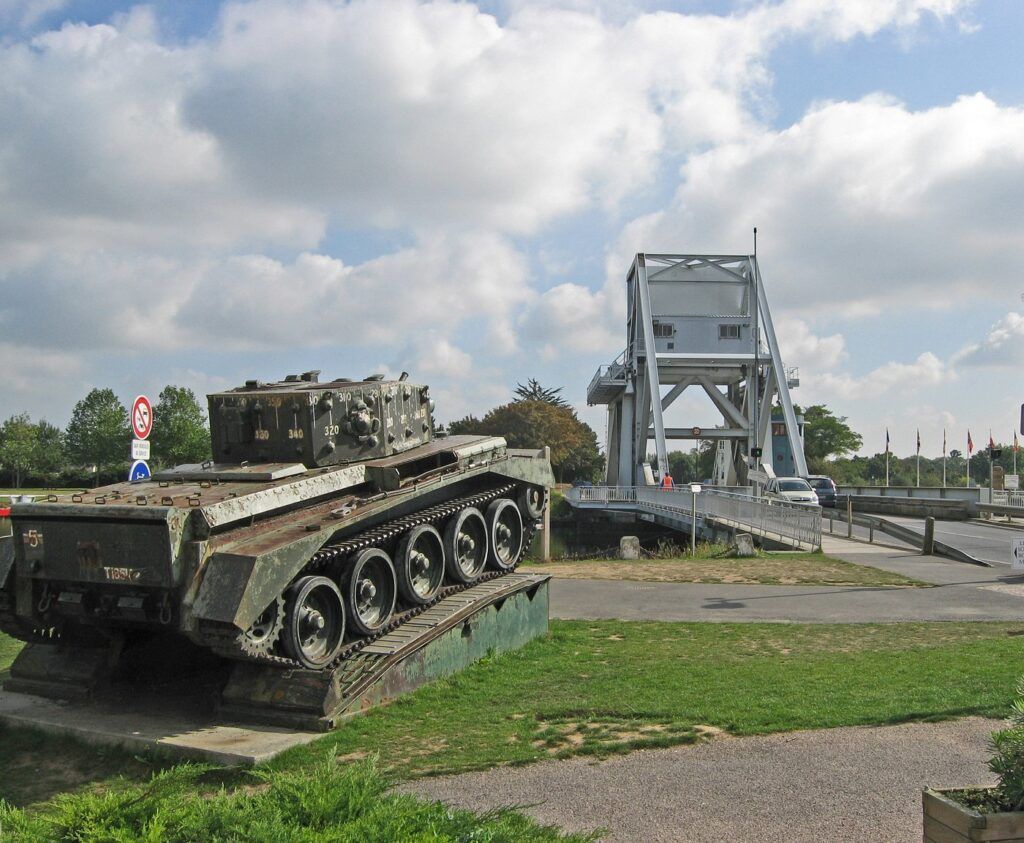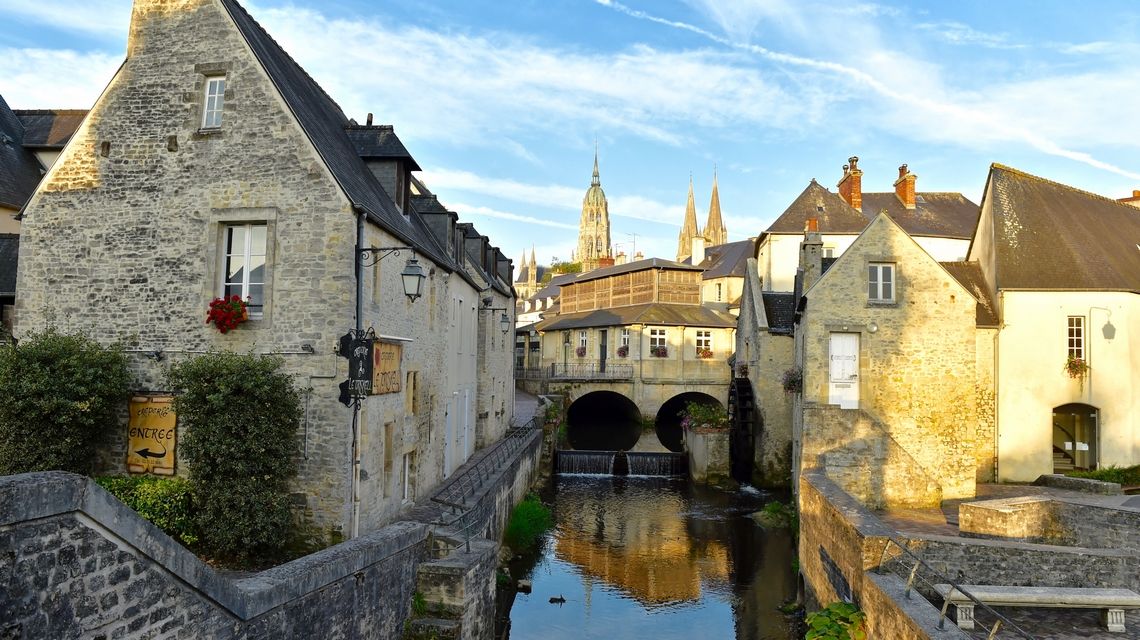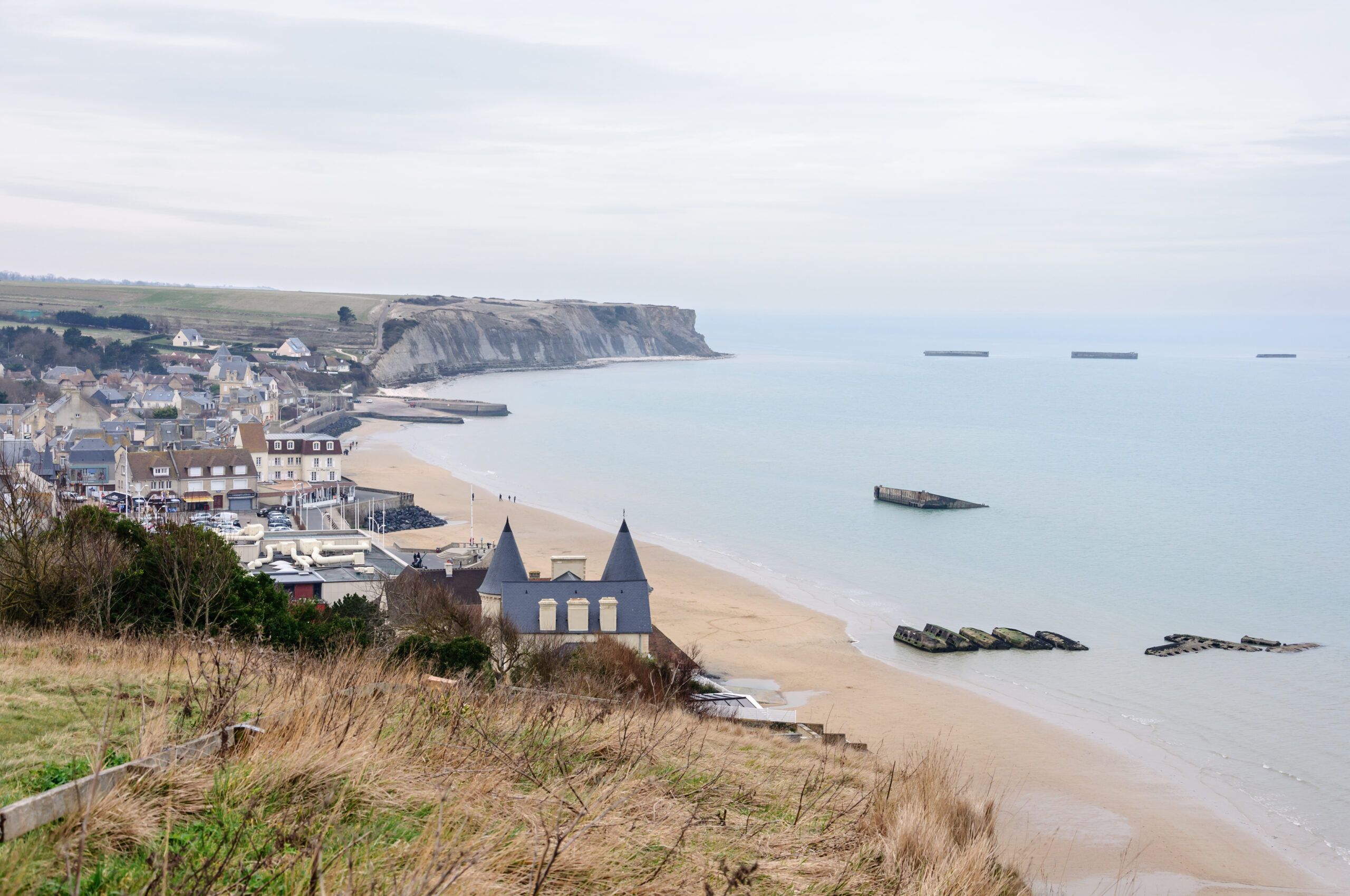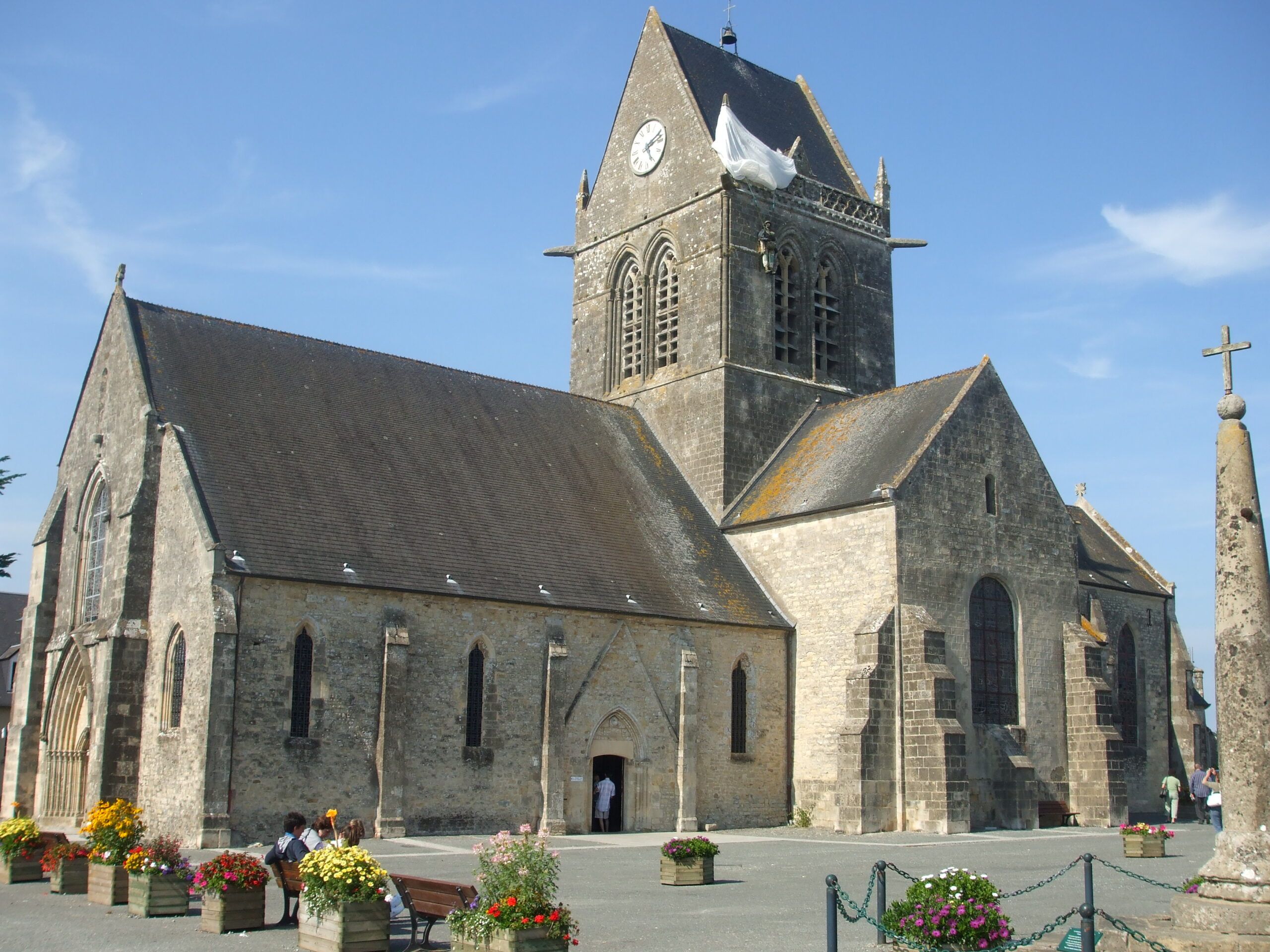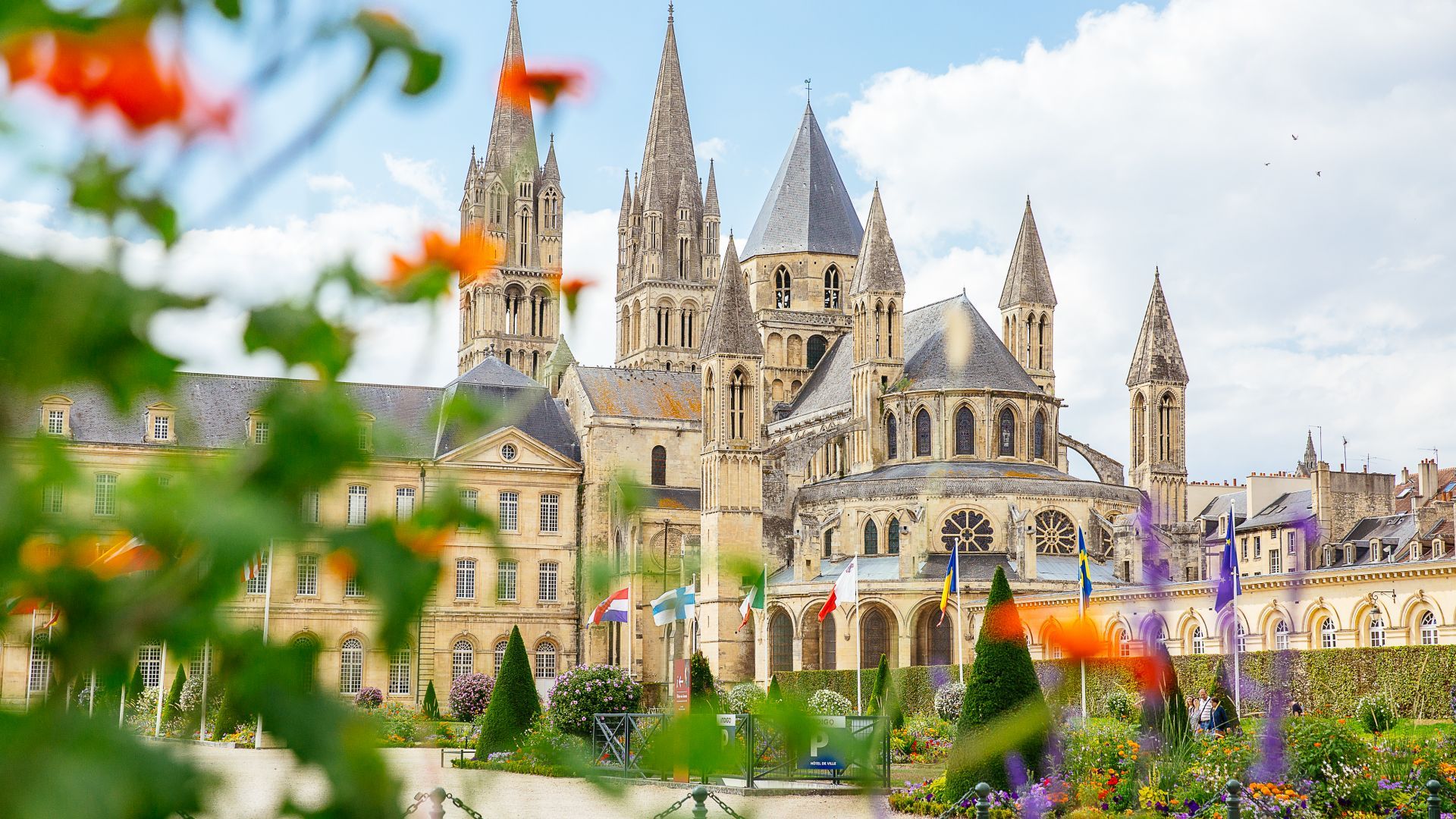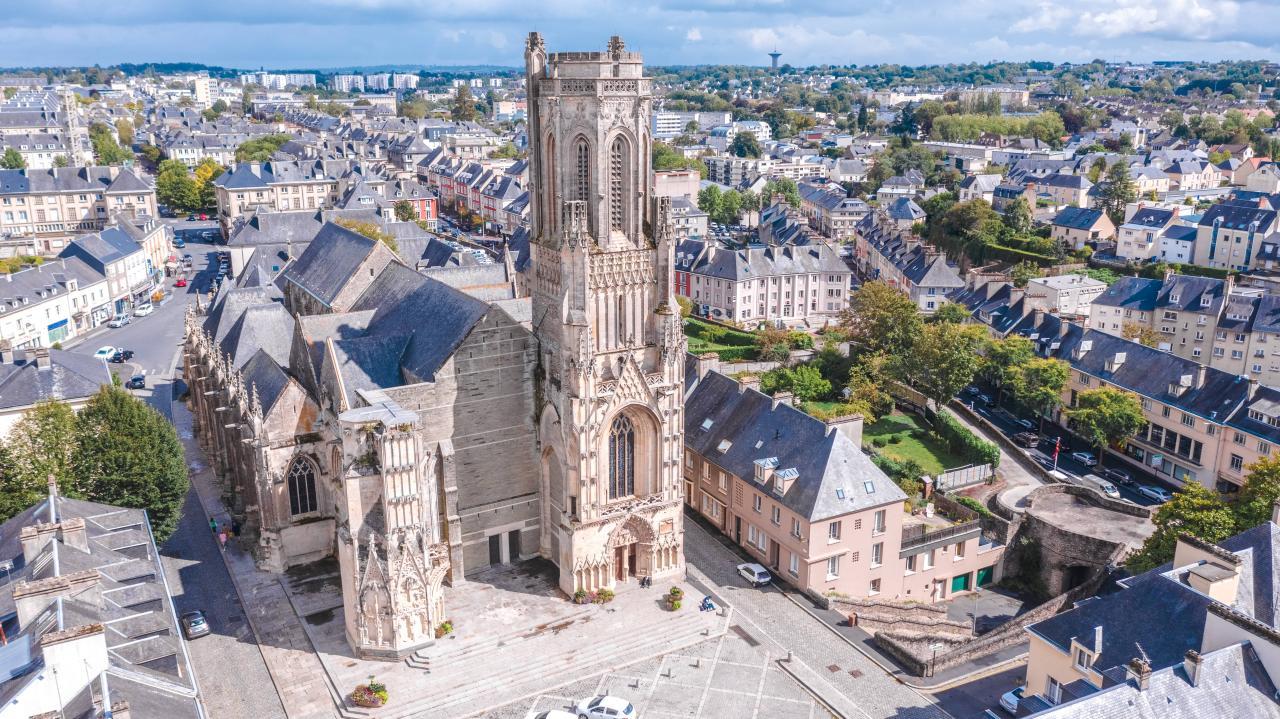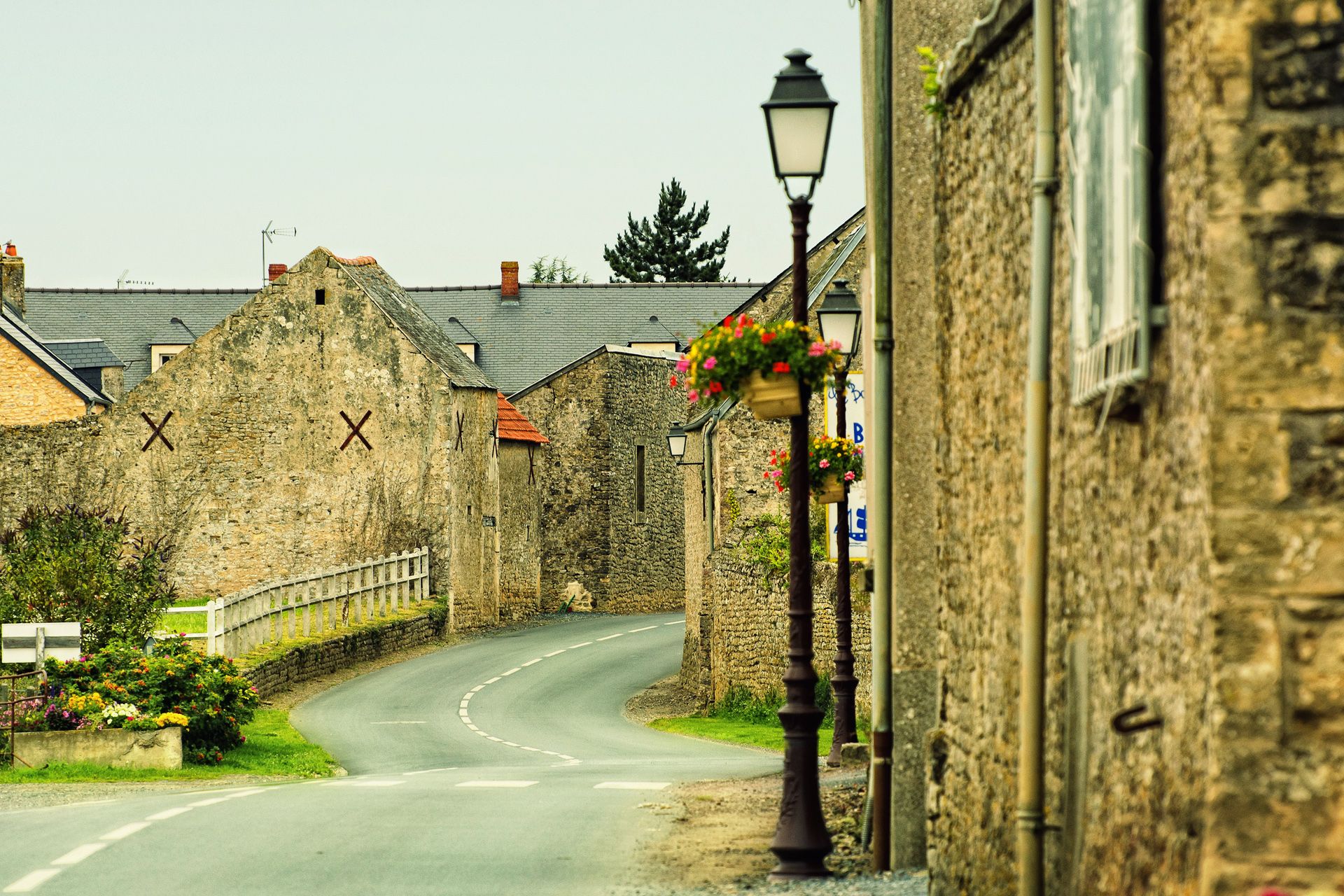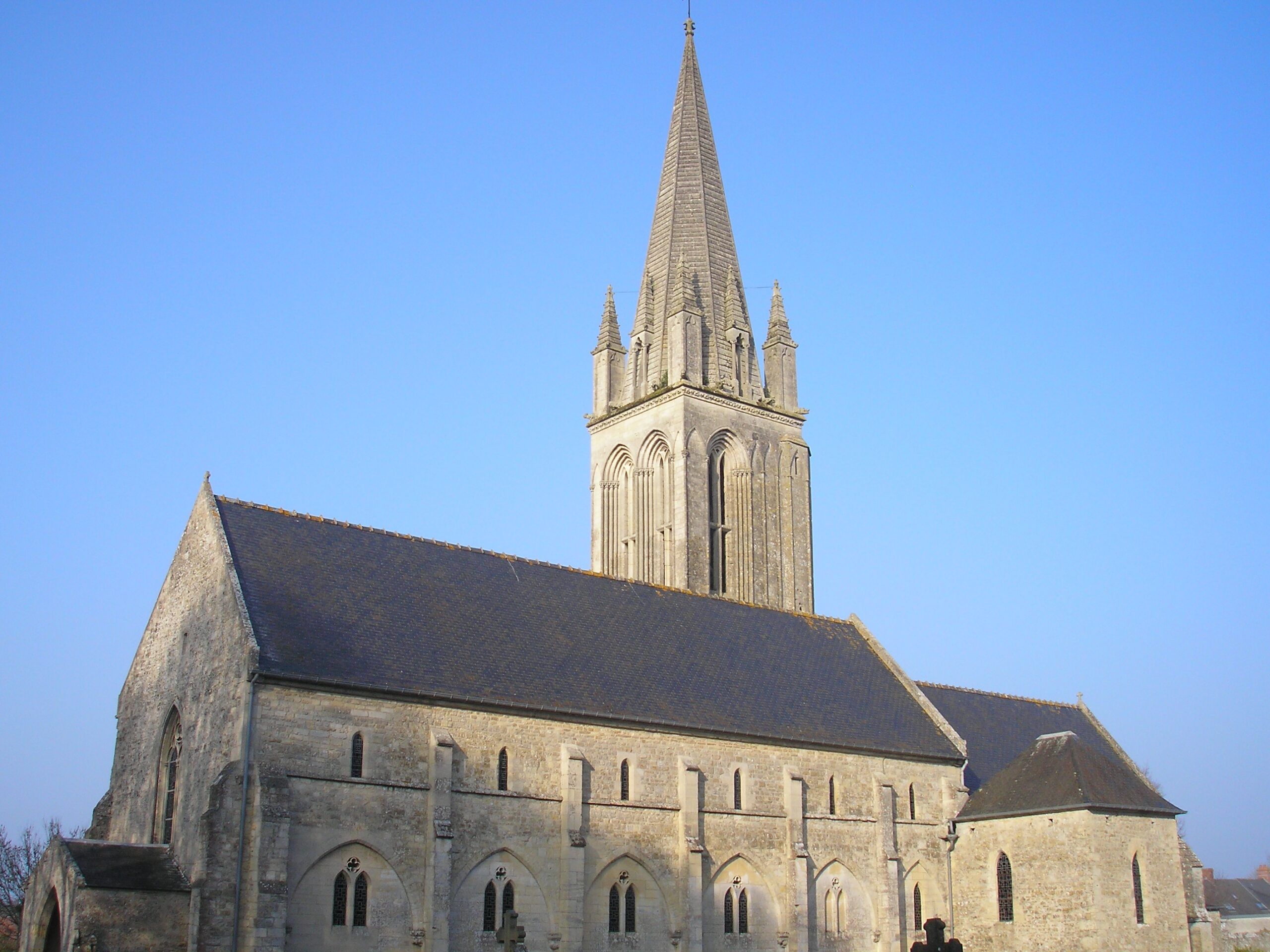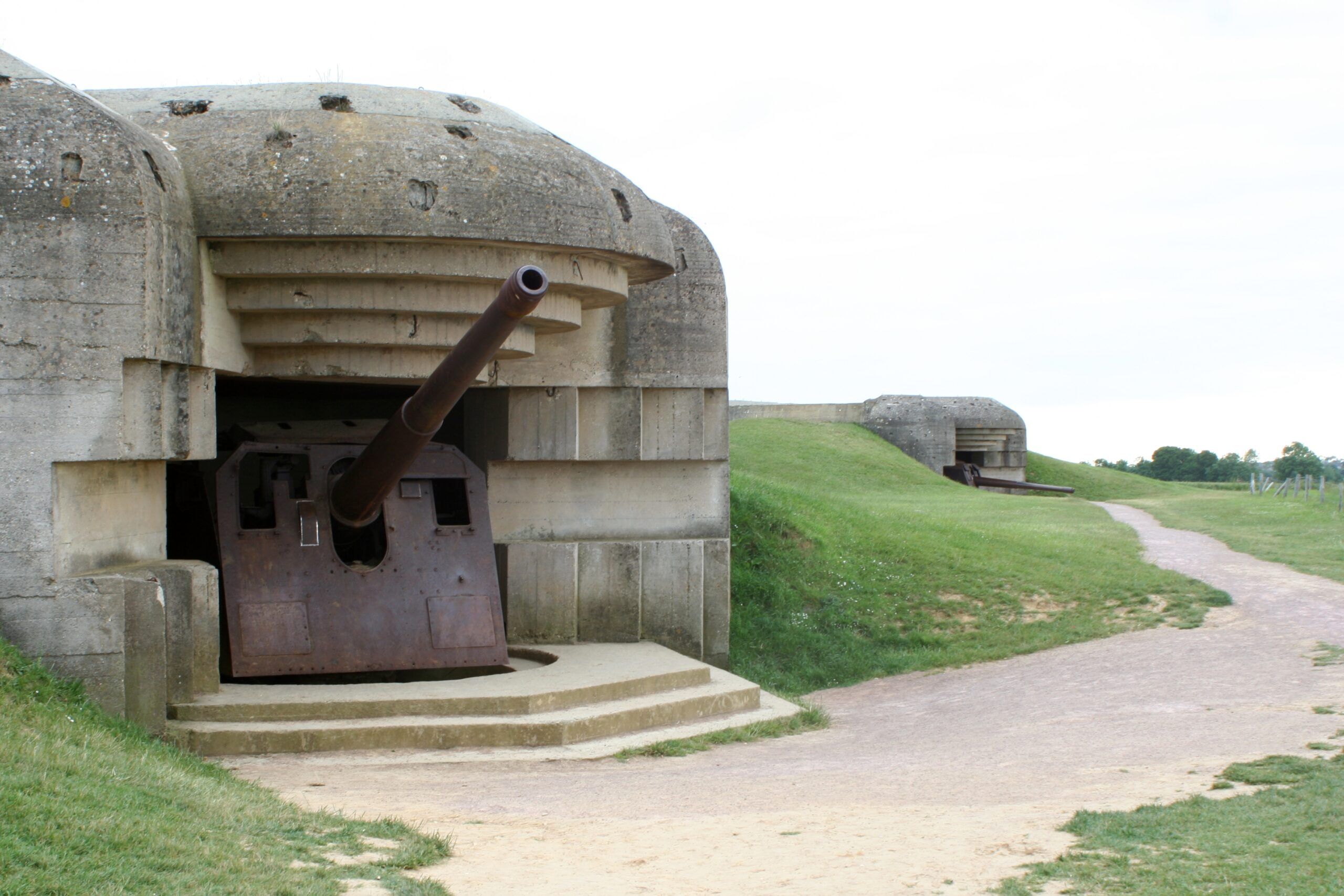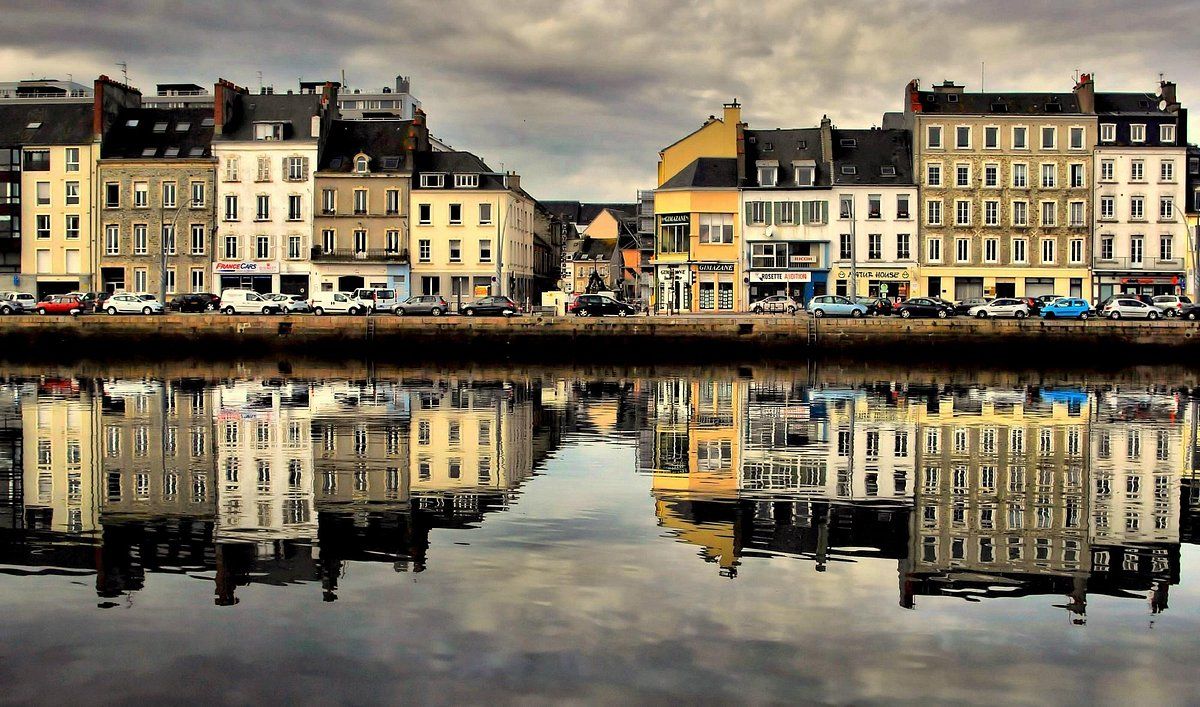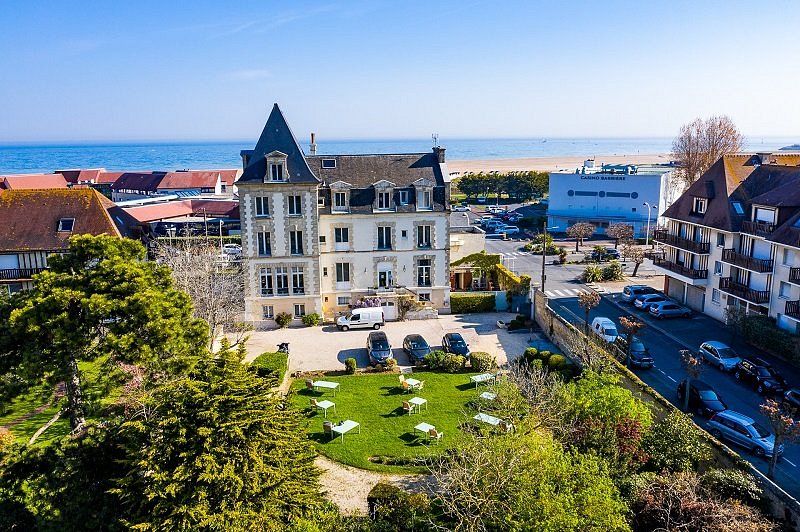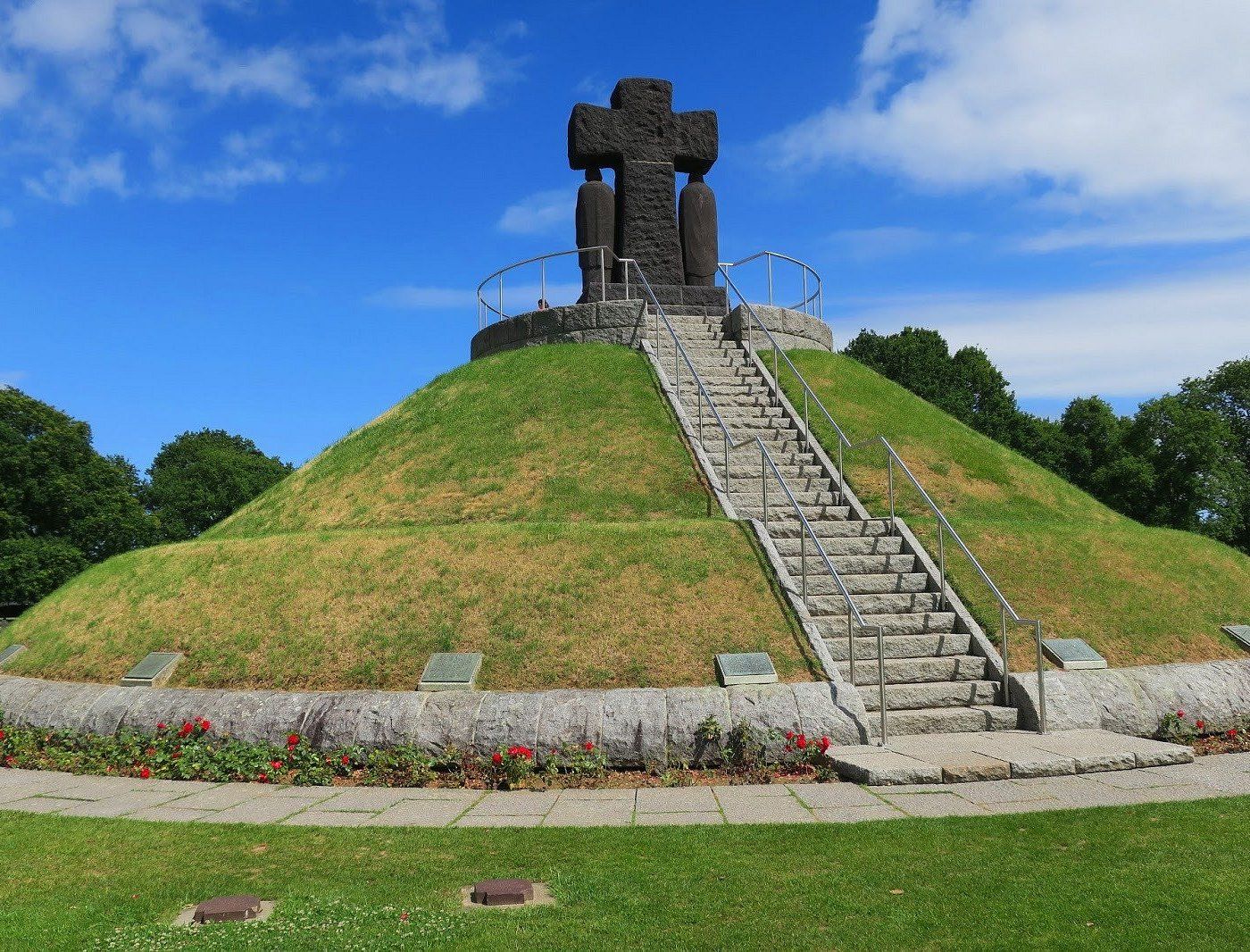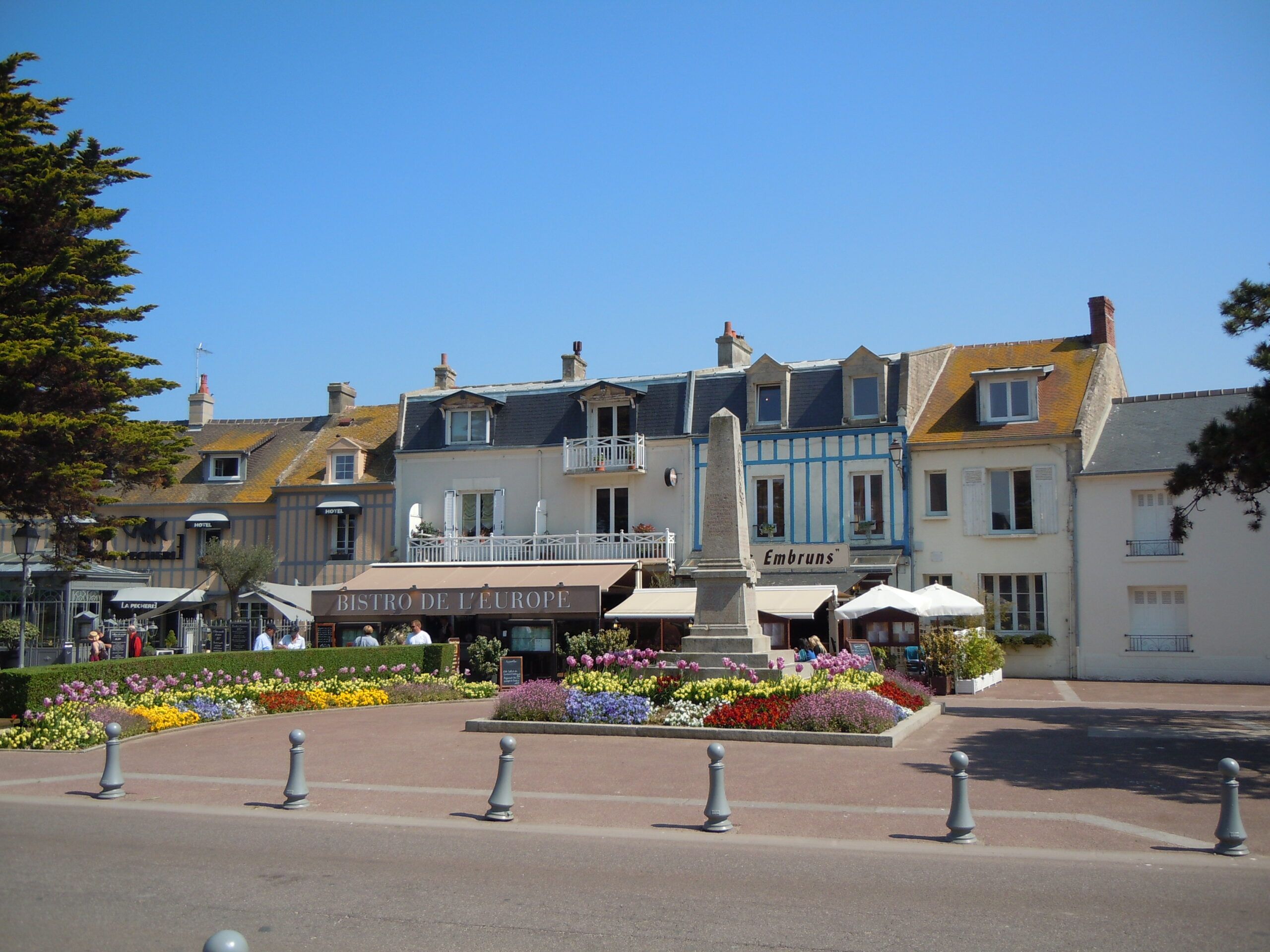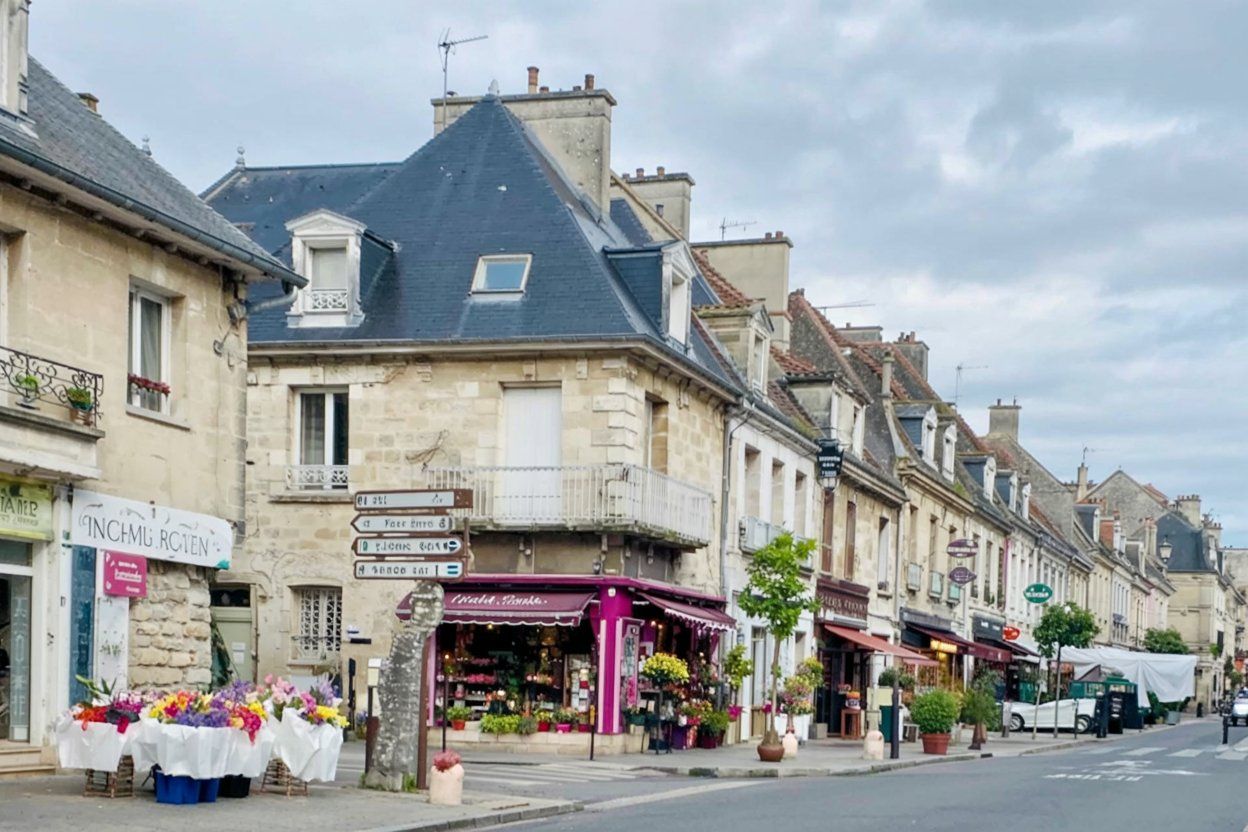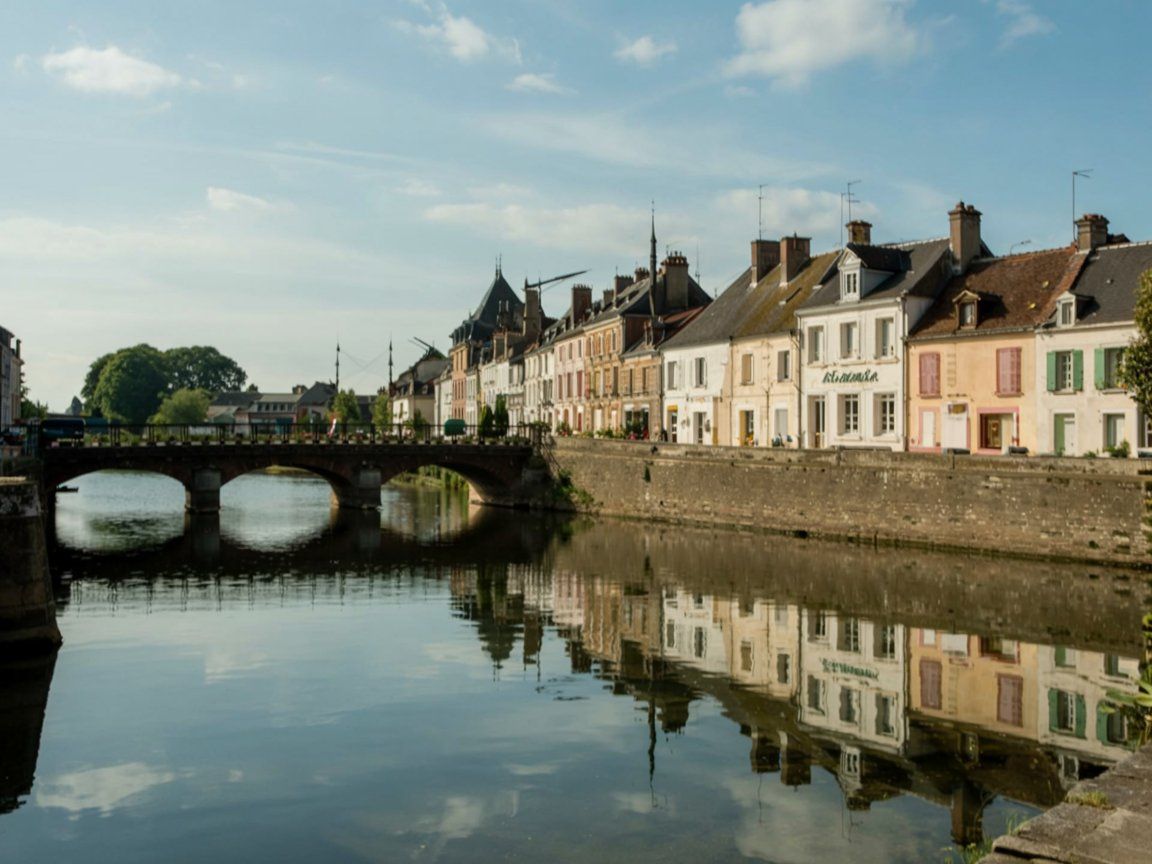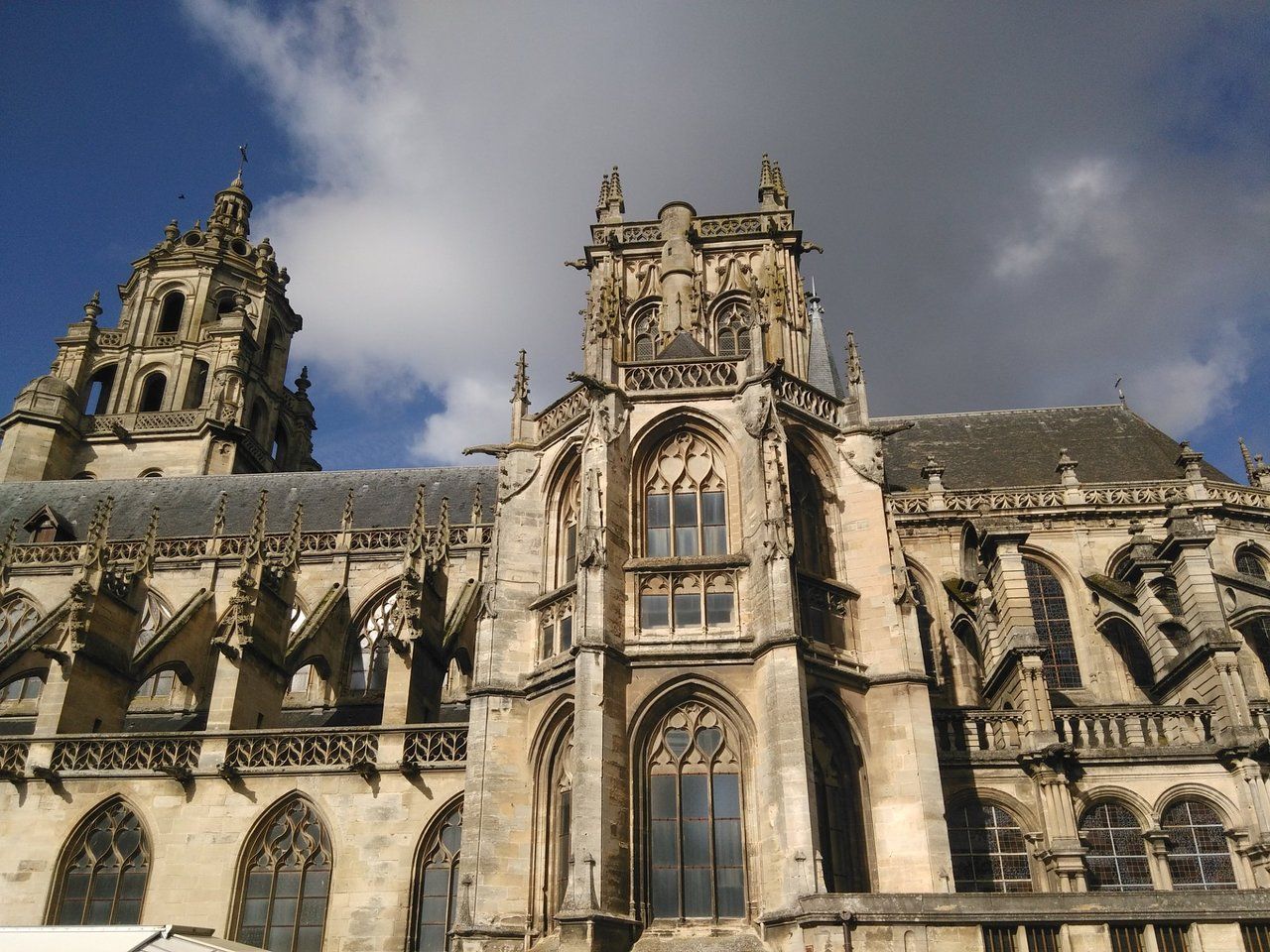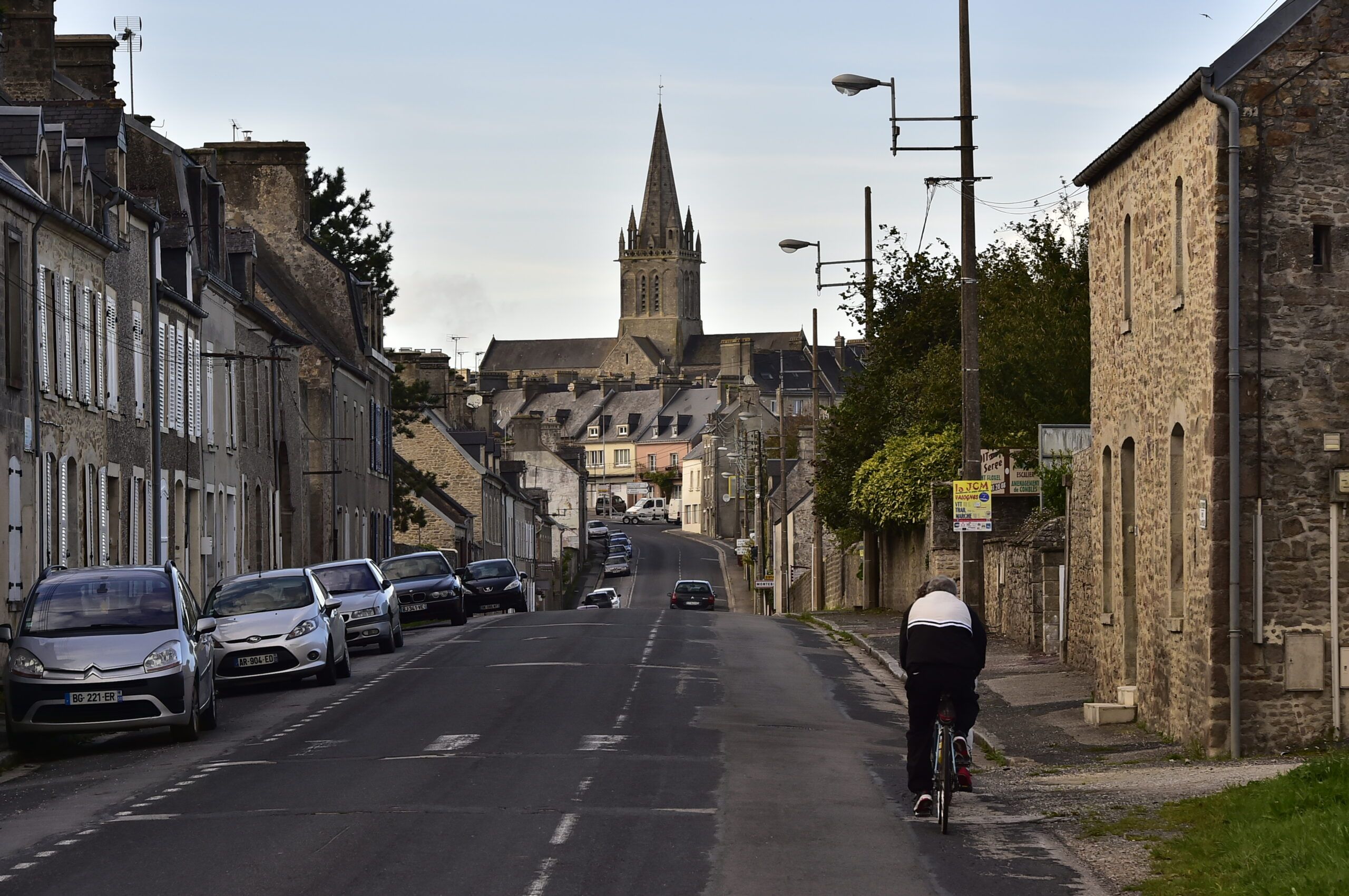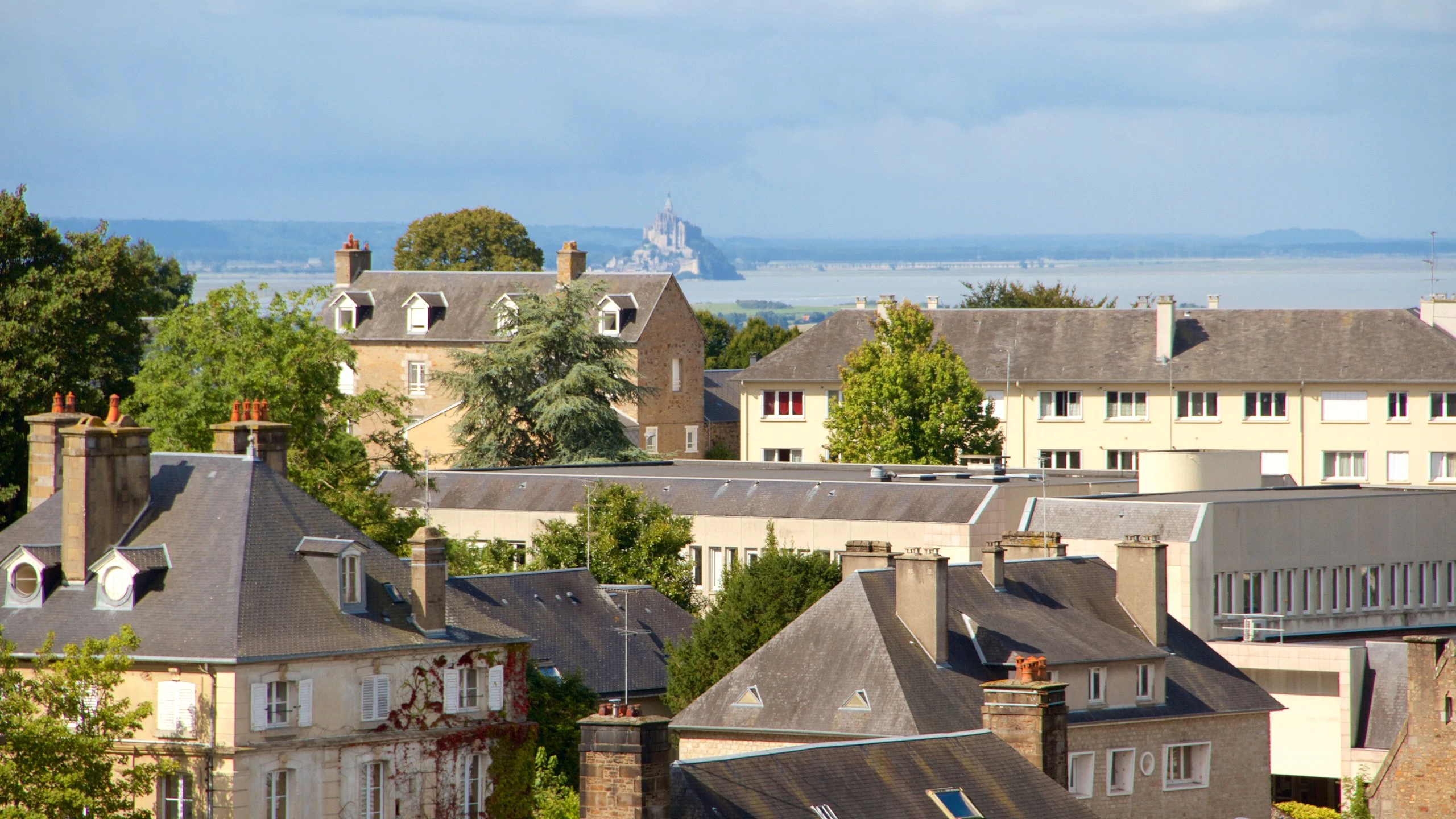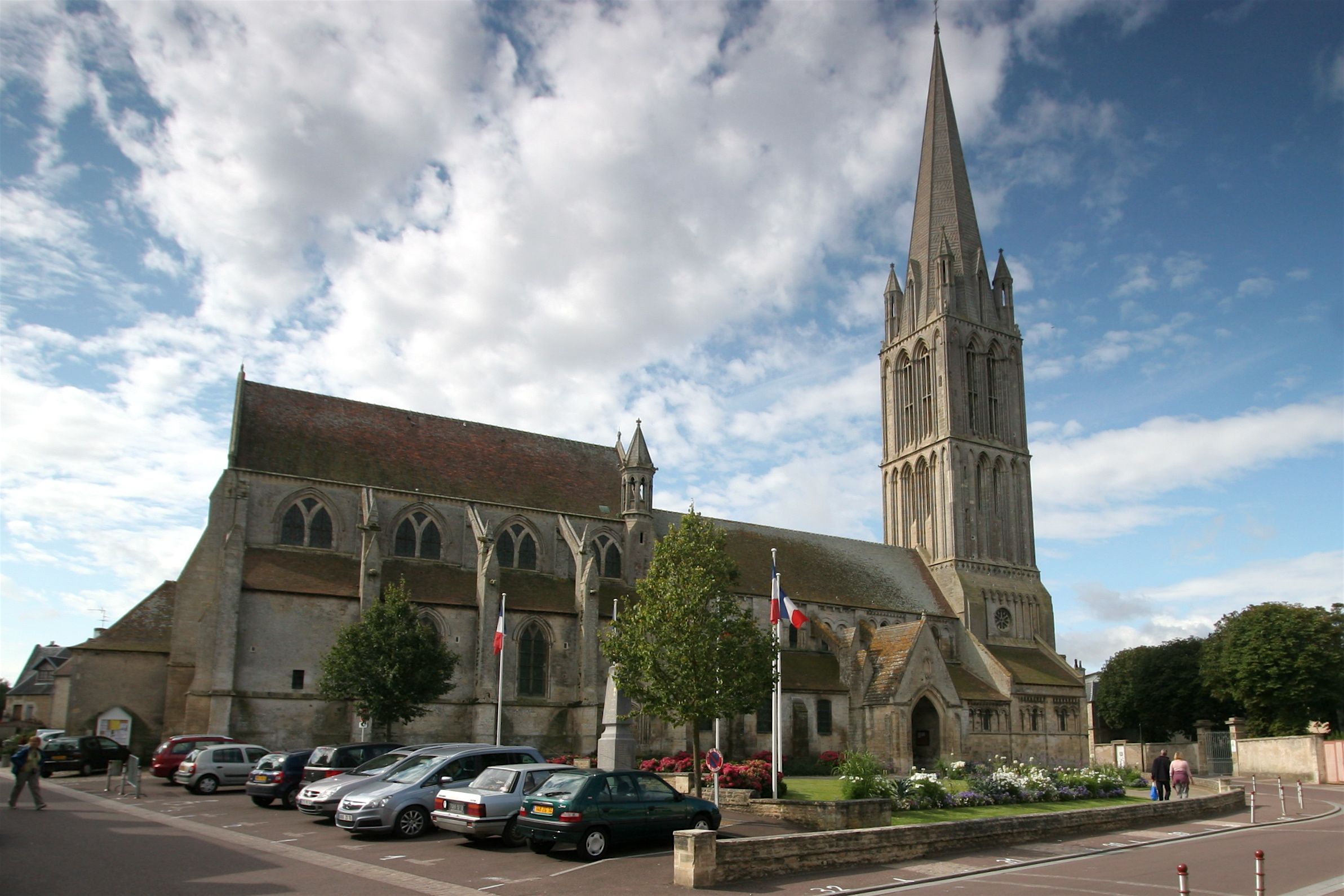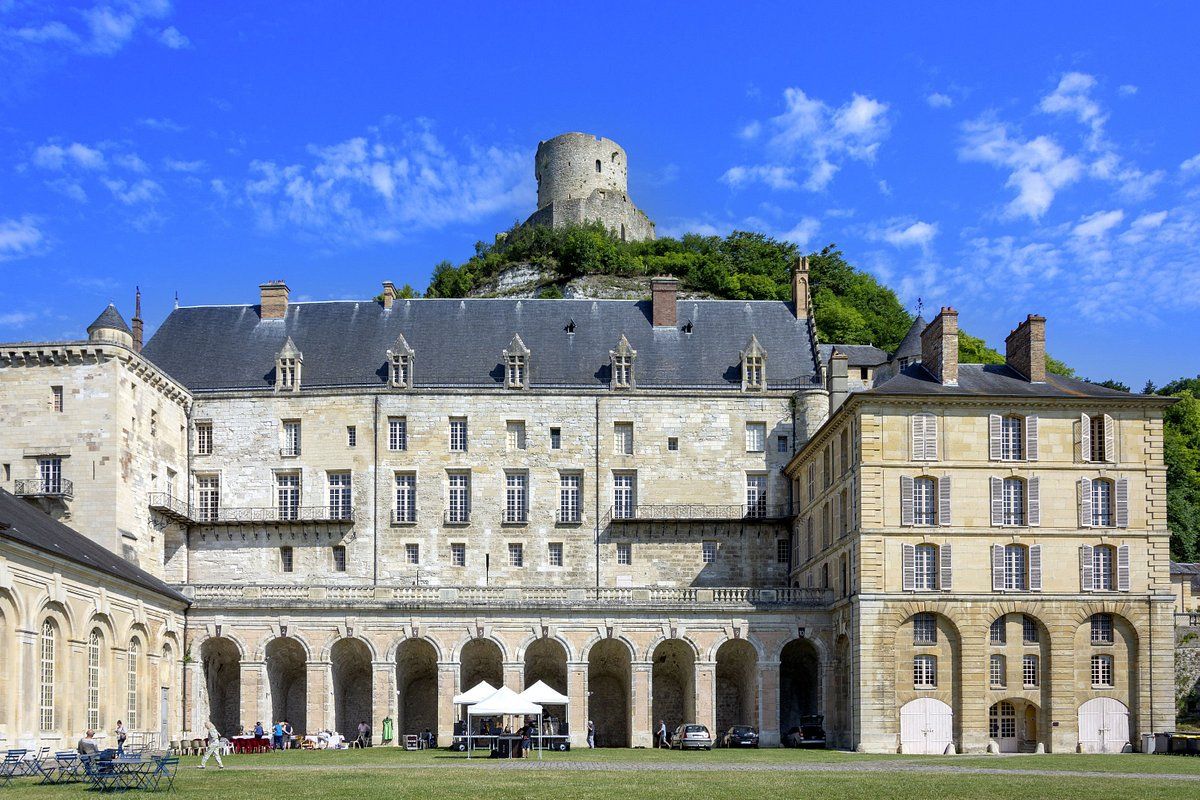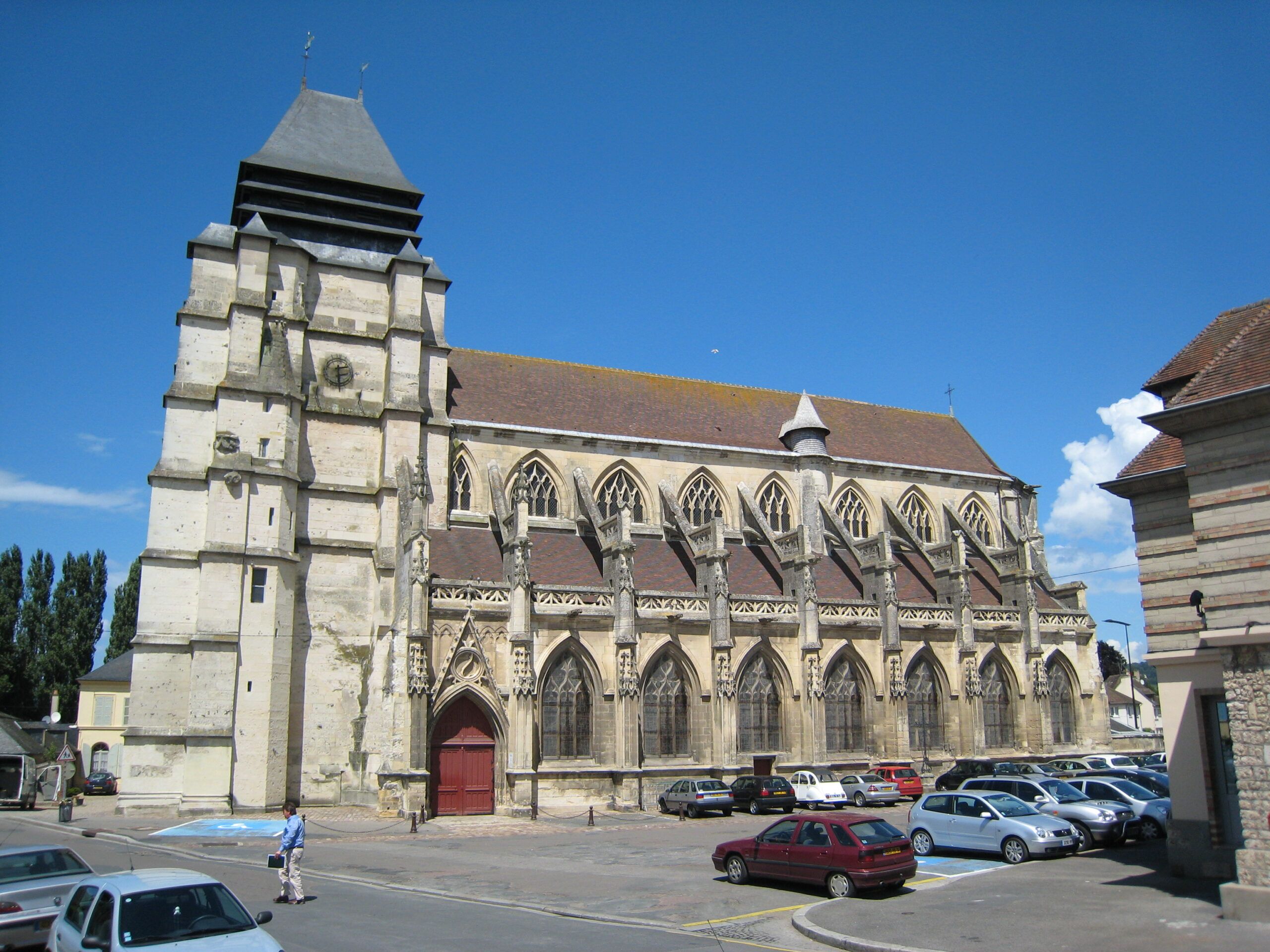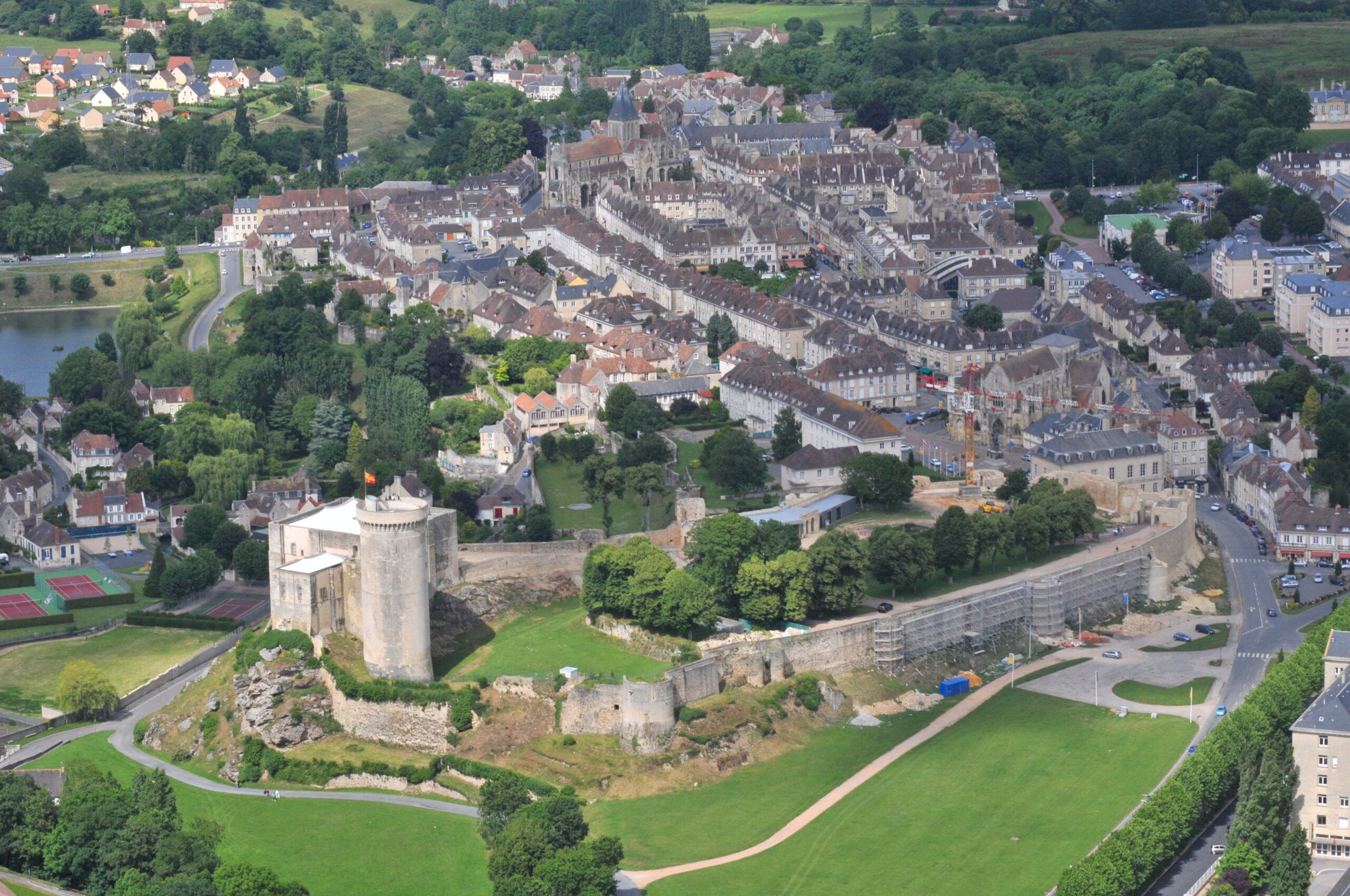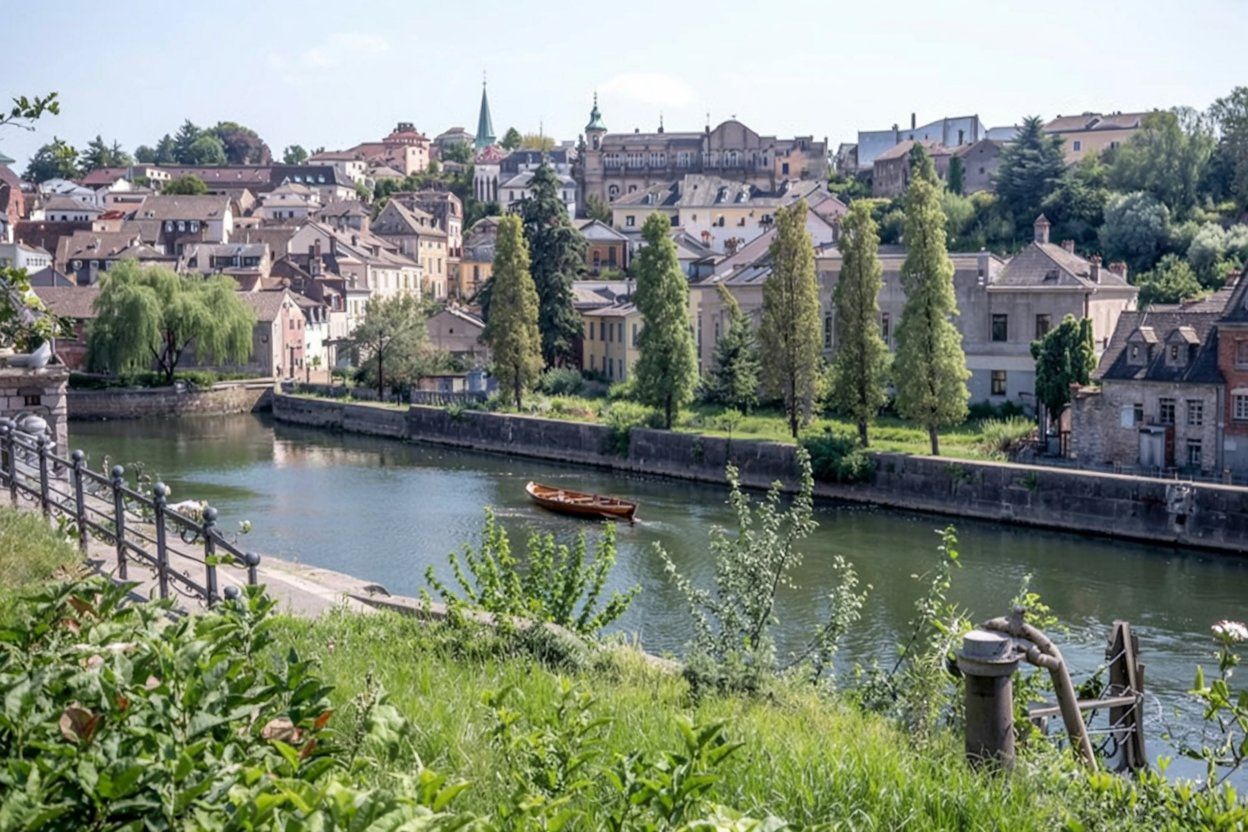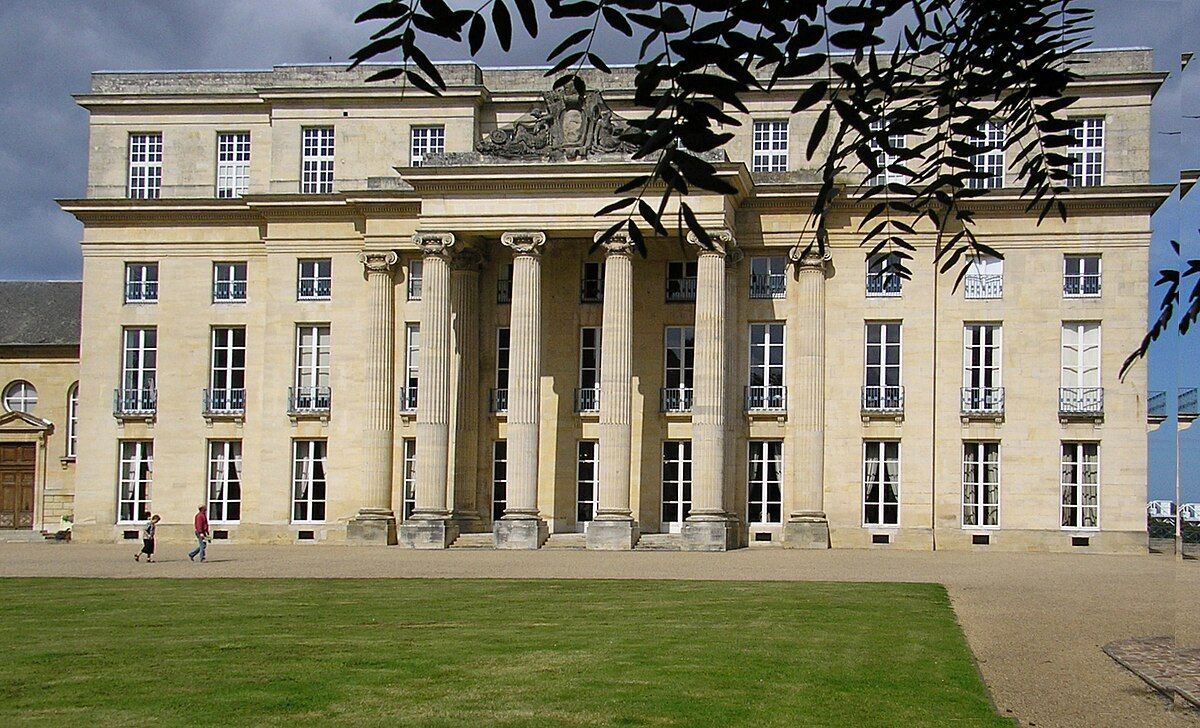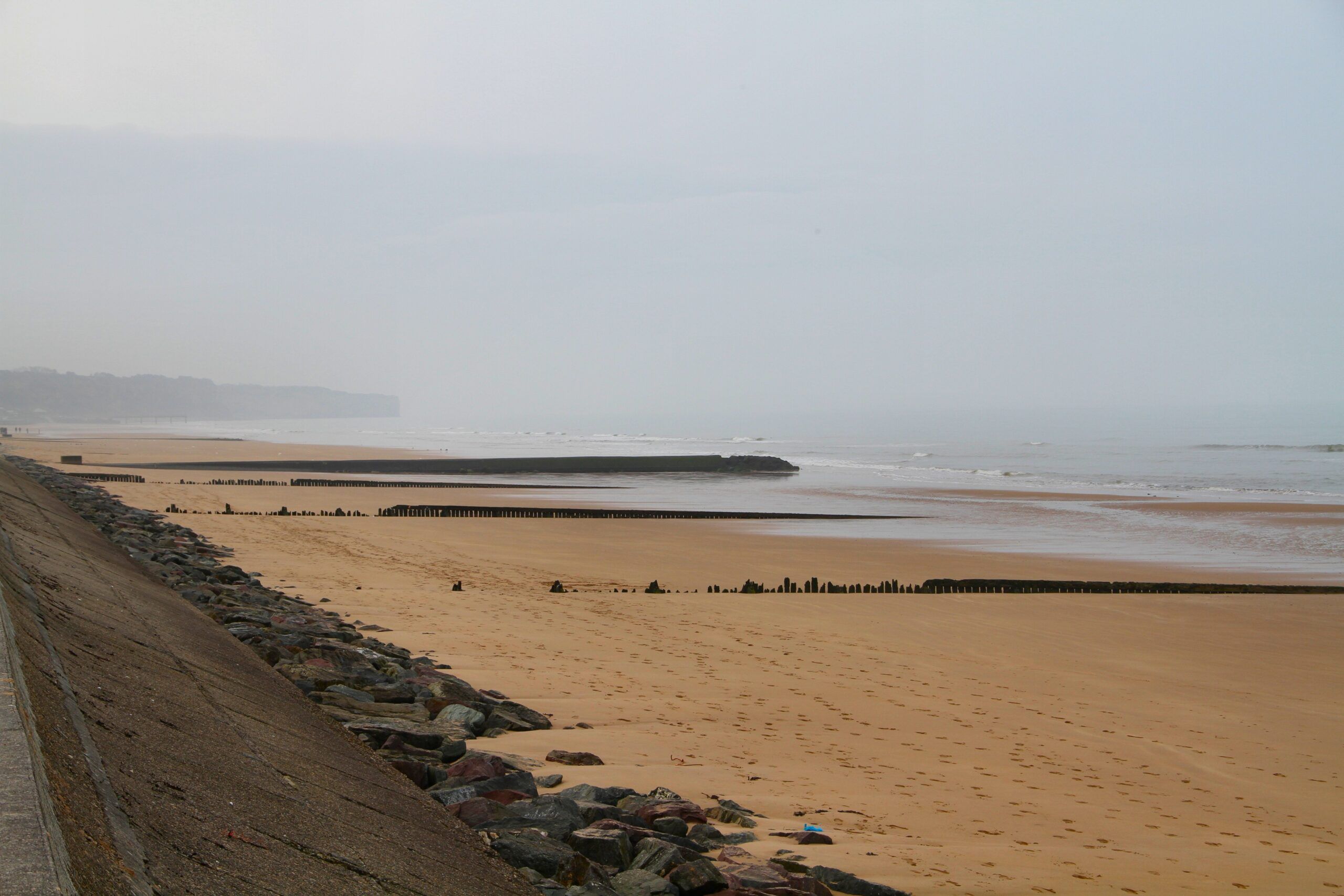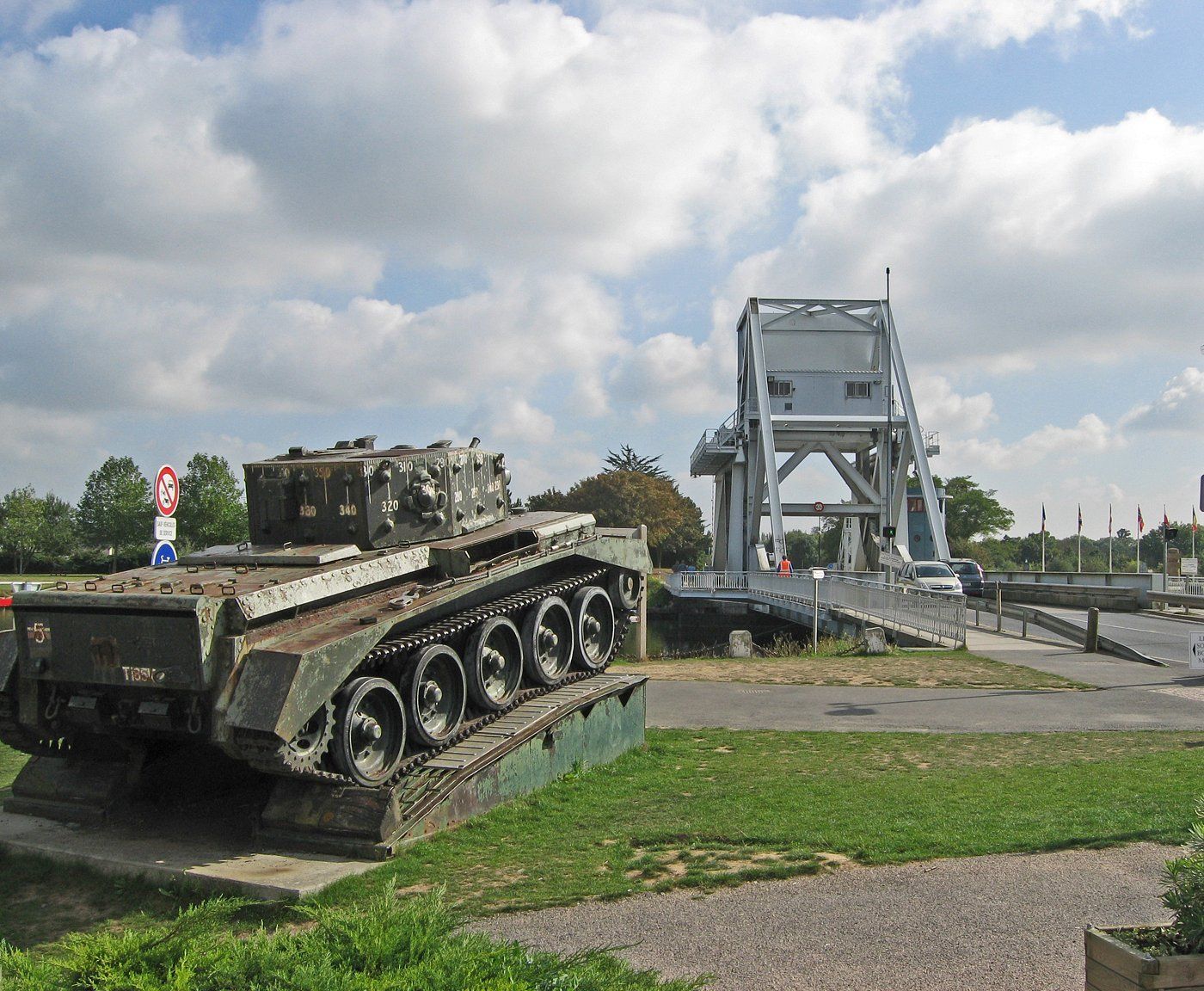Nestled in Normandy, the small town of Ranville stands out in World War II history. On June 6, 1944, it became the first French village freed by Allied forces. British paratroopers from the 6th Airborne Division landed here in the early hours to secure key bridges—an opening move in the massive invasion.
Visitors in Ranville today will find sites that tell D-Day’s story, including the British military cemetery where almost 2,500 Commonwealth soldiers are buried. The cemetery and the churchyard next door hold some of the earliest casualties from the Normandy landings. Walking among the headstones, you really feel the weight of what happened here.
Visit Recommended D-Day historic hotels and B&Bs along the invasion beaches.
Guided tours focus on the cemetery and church, offering context about Ranville’s part in the Battle of Normandy. You’ll need to register at the local tourist office for these tours. Beyond the WWII history, Ranville is also just a living French village, with daily life carrying on amid these memorials.
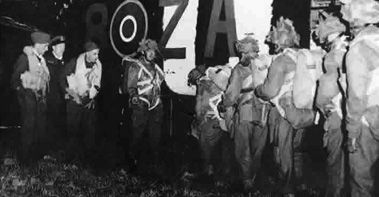
Overview of Ranville: Then and Now
Ranville became the first liberated village in Normandy during World War II. The events of June 6, 1944, still shape its identity today.
Ranville’s Location and Significance
Ranville sits just east of Caen in the Calvados region. Its spot near the Normandy coast made it crucial for D-Day. British troops targeted Ranville because it controlled a bridge over the Orne River and the Caen Canal.
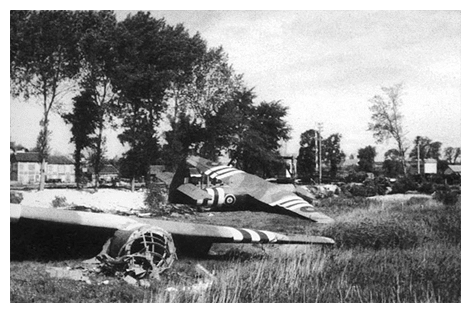
These bridges—later called Pegasus and Horsa—linked the invasion beaches to inland areas. Without them, the Allies risked being cut off from reinforcements.
At 16 minutes past midnight on June 6, British paratroopers landed near Ranville. The 13th Battalion of the Parachute Regiment, part of the 5th Para Brigade, 6th Airborne Division, secured the village by 2:30 AM.
The Role of Ranville in Normandy
Ranville became a hub for British airborne operations on D-Day. Paratroopers held the village against German counterattacks in the days after the landings.
The Allied plan put Ranville on the eastern edge of the invasion. Holding it stopped German reinforcements from flanking the main beaches.
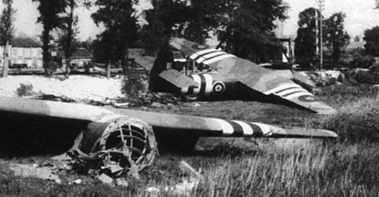
Fighting around Ranville was fierce. Germans tried several times to retake the village and its bridges, but the British held on, sometimes against the odds.
The Ranville War Cemetery now holds over 2,150 British soldiers, 76 Canadians, 5 French, and 322 Germans—a sobering reminder of the cost.
Modern-Day Ranville
These days, Ranville is a quiet village that remembers its WWII legacy. Memorials and historical markers dot the area, honoring its unique place in D-Day history.
A 10,000 square foot exhibition space recreates WWII scenes, pulling you into what life was like during the occupation and liberation. It’s surprisingly immersive for a small town.
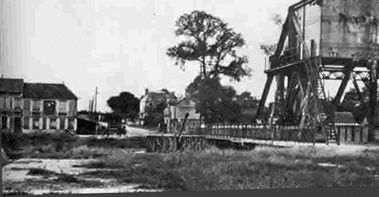
The church and cemetery draw history buffs from all over. The churchyard holds some of the first Allied soldiers to die on D-Day.
Walking through Ranville, you’re literally on the same streets British paratroopers secured in 1944. A lot of original buildings are still here, making it easier to picture the past.
Ranville on D-Day: Historical Context
Ranville was the first French village liberated on D-Day, June 6, 1944. This little Norman town became the focus of British airborne operations right at the start.
Pre-Dawn Landings in Ranville
At sixteen minutes past midnight, British airborne troops landed near Ranville. The village was important because it sat close to the Orne River and Caen Canal.
Paratroopers from the 5th Parachute Brigade dropped into fields around the village. Despite rough weather and navigation issues, many regrouped quickly.
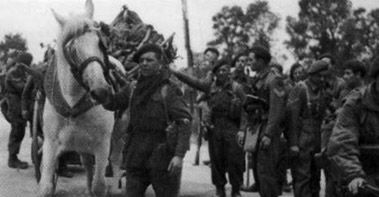
By 2:30 AM, British forces had surrounded Ranville. Some units focused on the village, others moved toward nearby objectives. Locals woke up to find their home at the heart of the Allied invasion.
The Role of British Airborne Forces
The British 6th Airborne Division led the charge in Ranville and nearby areas. Their mission: secure the eastern flank before seaborne troops arrived.
The division included:
- 5th Parachute Brigade
- 3rd Parachute Brigade
- 6th Airlanding Brigade
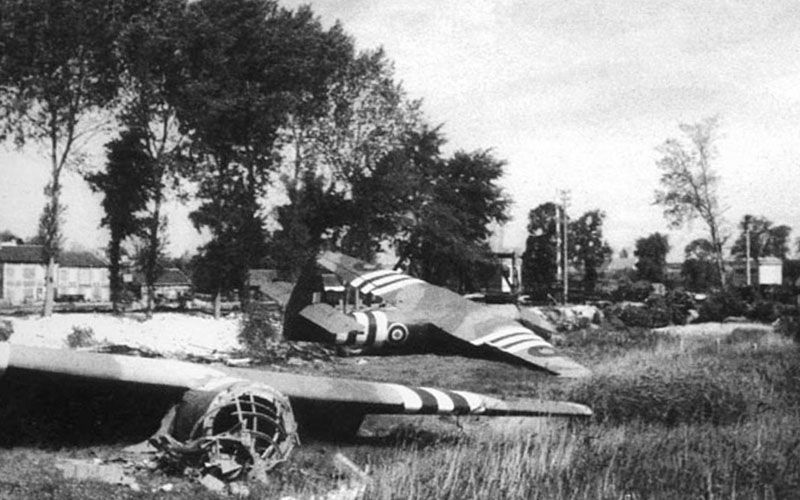
They had to capture bridges, knock out German artillery, and set up a defensive line to protect the beaches.
Wearing maroon berets and carrying limited supplies, these paratroopers relied on surprise and training. They faced tough odds until reinforcements could get there.
Securing Pegasus Bridge
The capture of Pegasus Bridge is one of D-Day’s most iconic moments. Just west of Ranville, this bridge over the Caen Canal was crucial for Allied movement inland.
Major John Howard led glider troops of the Ox and Bucks Light Infantry in a bold nighttime assault. Six gliders carrying 181 men landed astonishingly close to their target at 16 minutes past midnight.
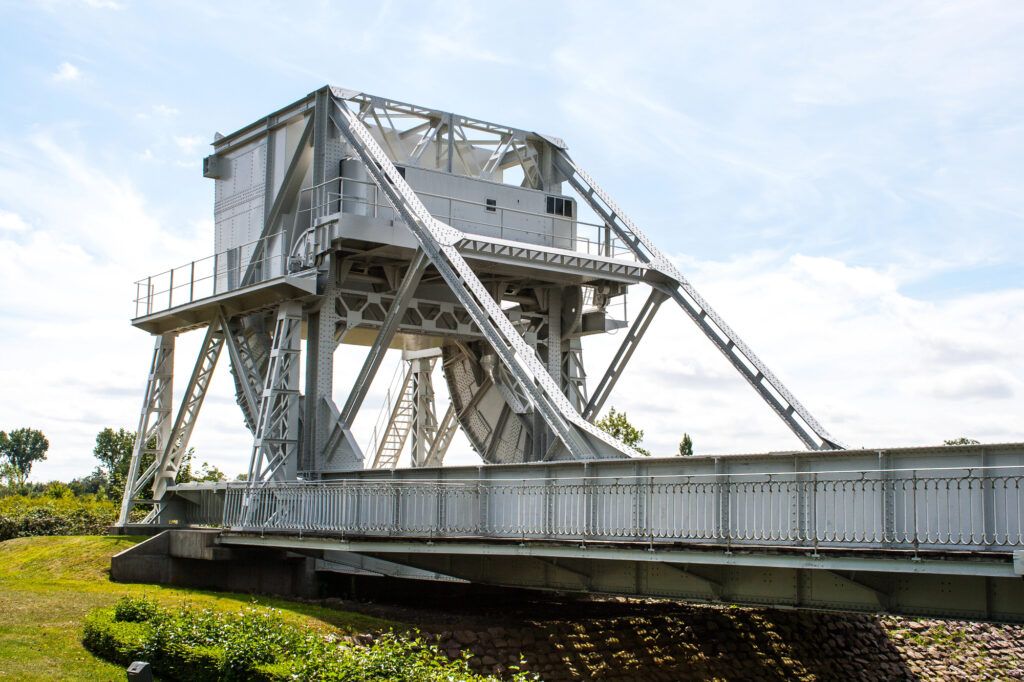
The British took the bridge in about 10 minutes with only a few casualties. They also grabbed the nearby Orne River bridge. Their speed stopped the Germans from blowing up these crossings.
With the bridges secure, reinforcements from Sword Beach could move inland later that day. The original Pegasus Bridge now sits in a museum nearby, if you’re curious to see it up close.
Key D-Day Sites in and Near Ranville
Ranville isn’t huge, but it’s packed with WWII history. Several well-kept sites here tell the story of the invasion’s early hours.
Pegasus Bridge and Memorial Pegasus
Pegasus Bridge is one of Normandy’s most famous D-Day spots. Just outside Ranville, British airborne troops captured it in a daring glider landing just after midnight. Securing it was essential for the invasion’s eastern flank.
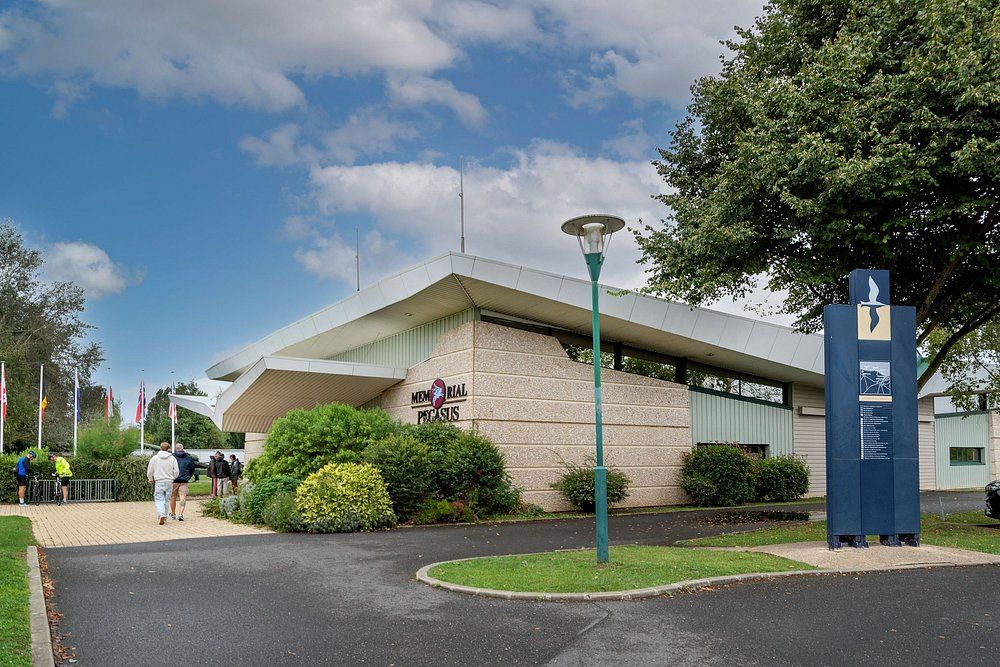
The Memorial Pegasus museum next door holds the original bridge and dives into the 6th Airborne Division’s story. You’ll see a full-size Horsa glider replica and personal items from soldiers who were there.
Café Gondrée, right by the bridge, claims to be the first building freed in France that day. It’s still open, and honestly, it’s a nice place to pause and grab a coffee.
Ranville War Cemetery
The Ranville War Cemetery holds some of the earliest D-Day casualties. With over 2,500 Commonwealth burials, it’s a powerful reminder of the cost of liberation.
Many buried here served in the British 6th Airborne Division and died in the first wave. The cemetery has two parts:
- The main Commonwealth War Graves Commission cemetery
- The smaller original churchyard where the first D-Day casualties were laid to rest
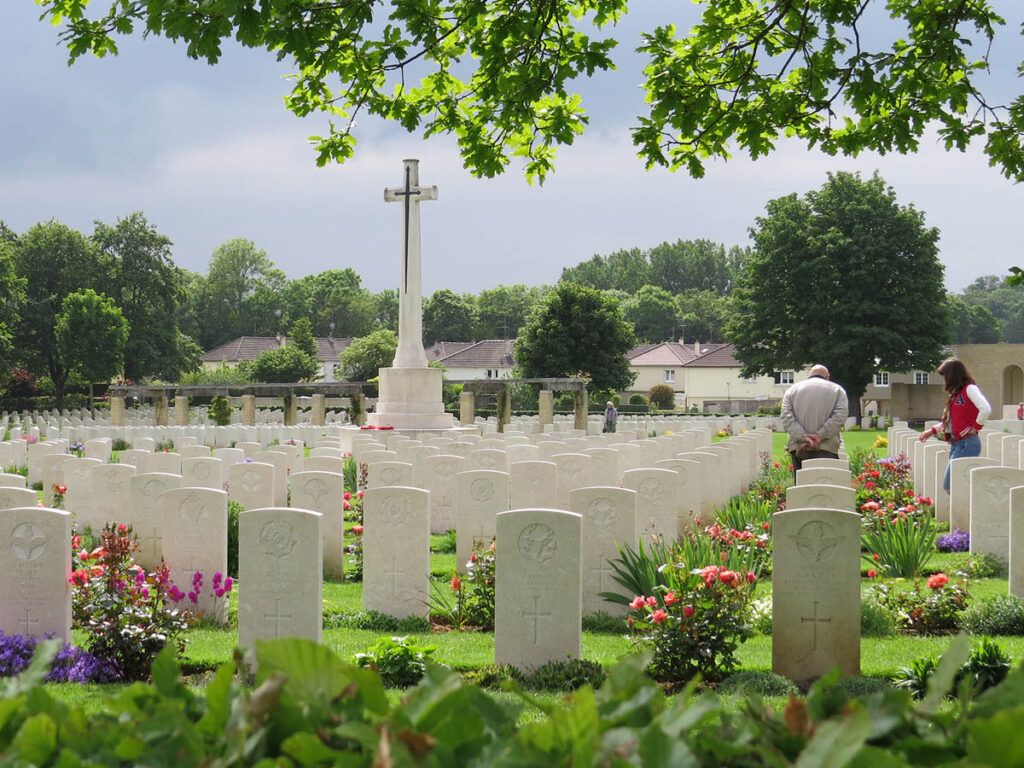
Ranville’s cemetery sits in a spot that was one of the first places freed on D-Day. The white headstones lined up on the green grass make a quiet place to think.
Visitor info is available at the entrance, and the cemetery is open daily—no ticket needed.
Nearby Landing Beaches
Ranville isn’t on the beach, but it’s close to the main invasion zones:
Sword Beach is just 5 miles north. British troops landed here, aiming for Caen. Today, you can walk the same shore and check out a few memorials.
Juno Beach—where Canadians landed—is about 12 miles northwest. The Juno Beach Centre has solid exhibits about Canada’s role on D-Day.
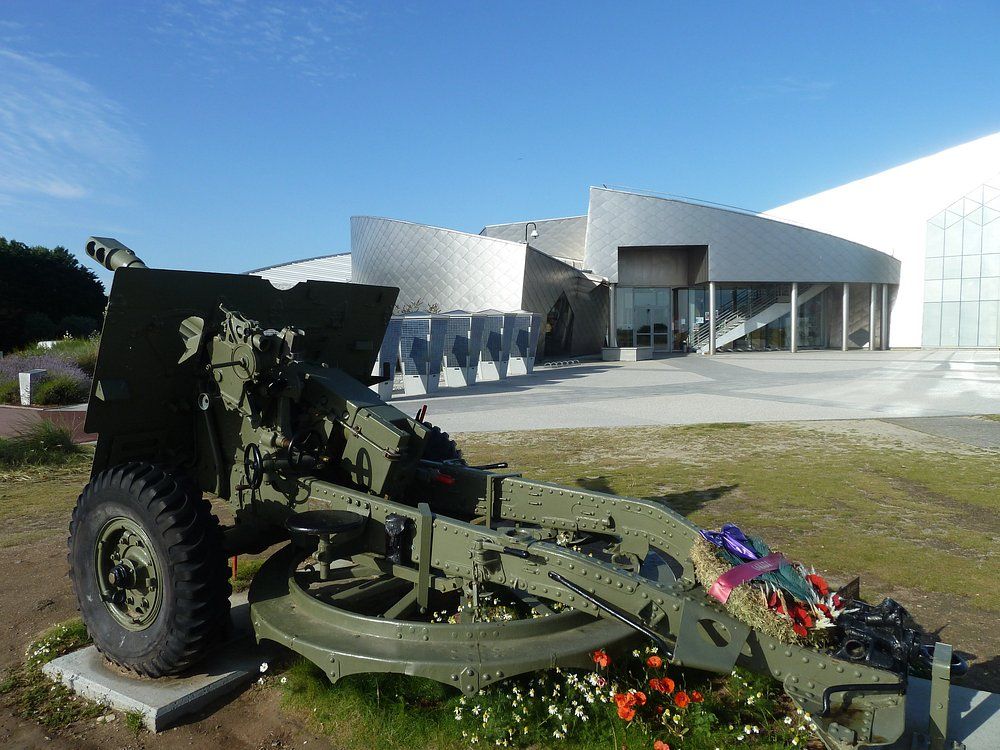
Further west, Gold Beach saw British landings. Museums and monuments dot the area, including the America Gold Beach Museum in Ver-sur-Mer.
Plenty of tour companies run trips from Ranville to these beaches, so you can hit several sites in a day if you want.
Exploring WWII History: Museums and Landmarks
Normandy’s coast is dotted with sites where Allied troops fought during D-Day and the Battle of Normandy. These museums and landmarks help you get a sense of what happened on June 6, 1944, and the days after.
Stay steps from Omaha Beach and historic landmarks. Best rates on local accommodations.
Airborne Museum at Sainte-Mère-Église
The Airborne Museum in Sainte-Mère-Église is famous partly because of John Steele, the American paratrooper who got stuck on the church steeple during the night drop. There’s still a parachute dummy hanging from the church as a nod to that wild moment.
Inside, three buildings are packed with artifacts, vehicles, and gear used by the 82nd and 101st Airborne Divisions. The “Operation Neptune” building lets you walk through a C-47 aircraft, which is pretty cool if you ask me.
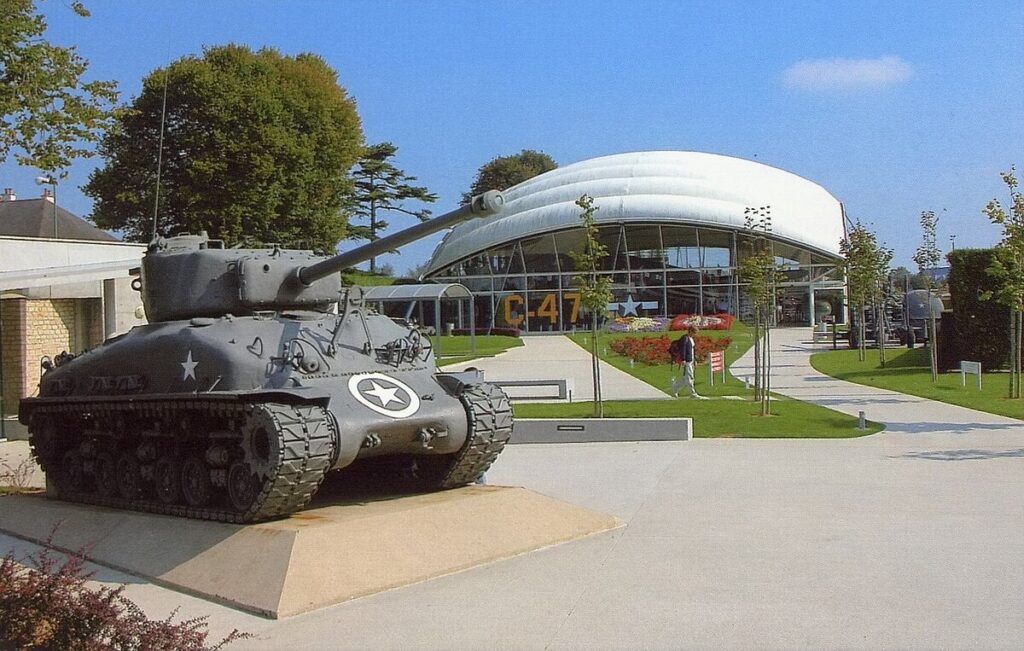
Personal items from soldiers, weapons, and interactive displays fill the museum. There’s even a real Waco glider and a simulation of what paratroopers faced during their jumps.
Hours change by season, with longer ones in summer. Give yourself a couple hours to see everything, or you’ll end up rushing.
Utah Beach Museum
Right on the original landing site, the Utah Beach Museum tells the story of the westernmost D-Day landing. The museum is built into a dune, blending into the landscape.
The star attraction is a rare B-26 Marauder bomber—only six are left in the world. Nine galleries walk you through the planning, execution, and outcome of the Utah Beach landings, where 23,000 men came ashore.
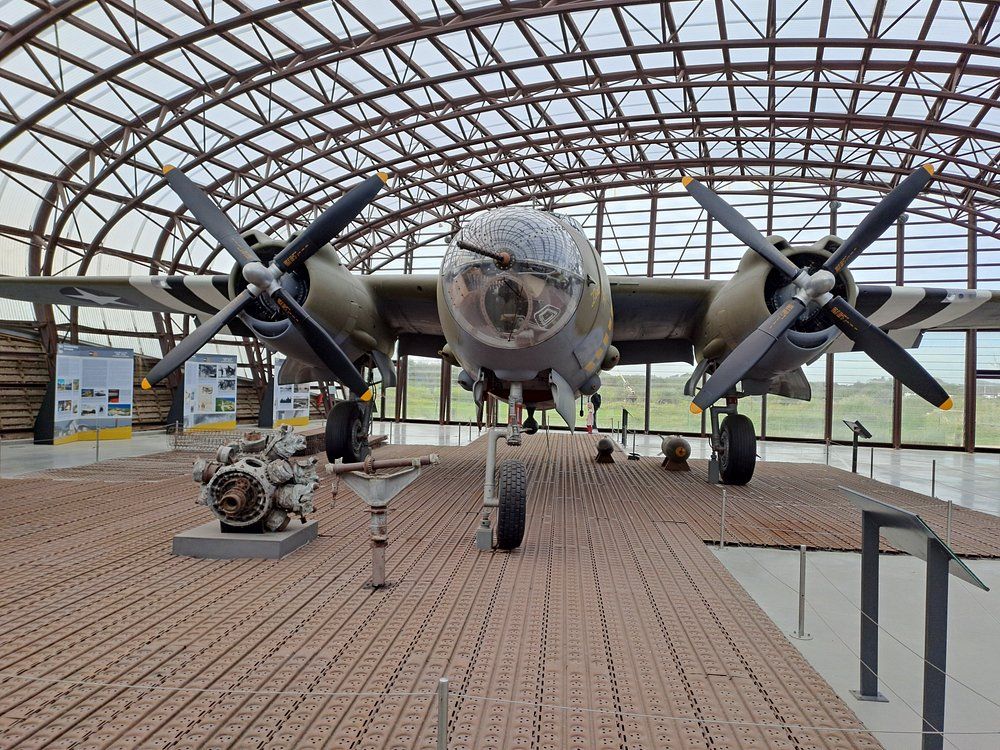
Personal stories make the history real. Touch screens and short films break down the military stuff in a way that actually makes sense. The observation deck gives you a view of the beach where it all happened.
Outside, there’s a monument and some German bunkers still standing. The beach is peaceful now—hard to imagine the chaos of June 6, 1944.
Longues-sur-Mer German Gun Battery
Between Omaha and Gold beaches, you’ll stumble upon one of Normandy’s best-preserved German coastal defense sites. The Longues-sur-Mer battery still holds four original 150mm naval guns tucked inside their concrete casemates.
These guns could lob 99-pound shells up to 13 miles offshore—a real danger to Allied ships on D-Day. Allied bombers tried to knock them out the night before, but the guns kept firing.
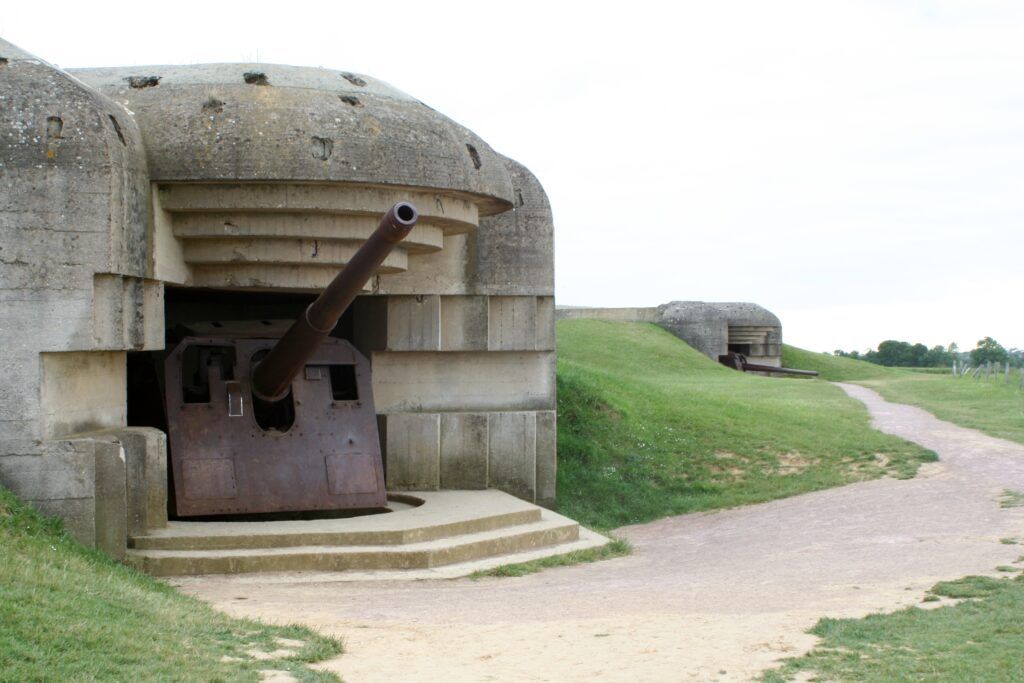
You’re free to wander the site and even step inside the bunkers. The command post, perched closer to the cliff, let German officers scan the Channel and direct fire.
This open-air spot doesn’t charge admission and usually takes 30-45 minutes to check out. Good shoes are a must; the ground’s pretty uneven in places.
Arromanches and the Mulberry Harbors
The little town of Arromanches still shows off one of D-Day’s wildest engineering tricks: the artificial Mulberry harbors. Chunks of these floating ports hang around in the bay, especially visible when the tide’s out.
The 360° Circular Cinema up on the cliff plays a gripping 19-minute film that mixes old footage with modern shots. The Musée du Débarquement explains how engineers pulled off building these harbors that brought in over 2.5 million men, 500,000 vehicles, and 4 million tons of supplies.
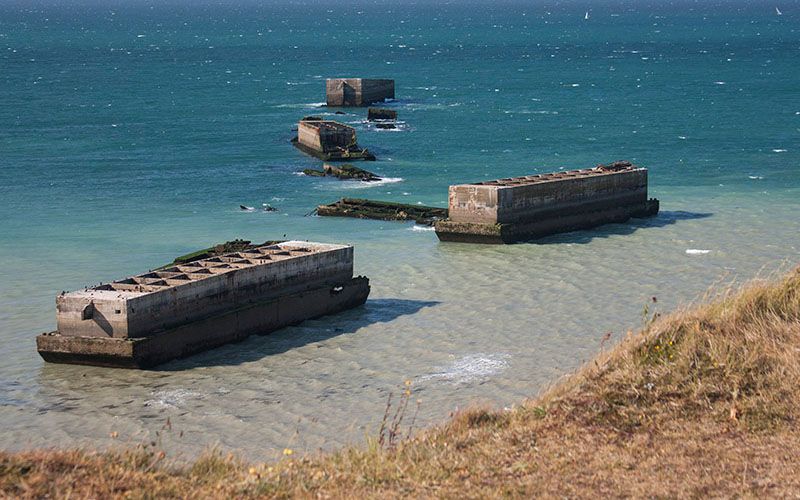
A working model inside the museum shows how the floating roadways flexed with the tides but still linked ships and shore. Big windows let you gaze out at what’s left of the harbor.
Arromanches has a handful of restaurants where you can wind down after exploring. If you can, try to visit at low tide to catch more of the harbor remains from the beach.
Commemorative Locations and Cemeteries
Ranville and the surrounding region hold several major war cemeteries and memorials, honoring sacrifices made during D-Day. These places offer a calm space to reflect and learn about WWII history.
American Military Cemetery
The American Cemetery at Colleville-sur-Mer overlooks Omaha Beach, with 9,388 U.S. soldiers buried on its immaculate 172-acre grounds. Rows of white marble crosses and Stars of David stretch out, and a memorial wall lists 1,557 missing soldiers.
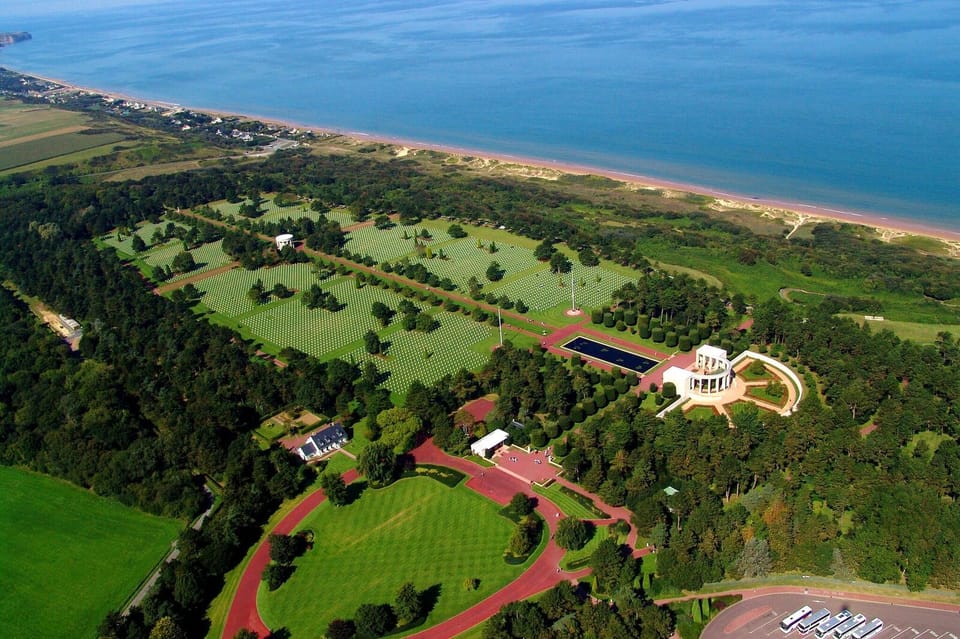
Inside the visitor center, you’ll find exhibits on D-Day and personal stories of sacrifice. The cemetery is open daily from 9 AM to 5 PM, with longer hours in summer.
Guided tours (free of charge) run daily and can help you make sense of this moving place. Many people find the flag-lowering ceremony at closing especially emotional. The spot on the cliffs gives you a view of the beach where so many fought and died.
Canadian Cemetery
The Bény-sur-Mer Canadian War Cemetery sits about 4 kilometers from Juno Beach, where Canadian troops landed. It holds 2,049 graves, mostly Canadians who died in the early days of the Normandy campaign.
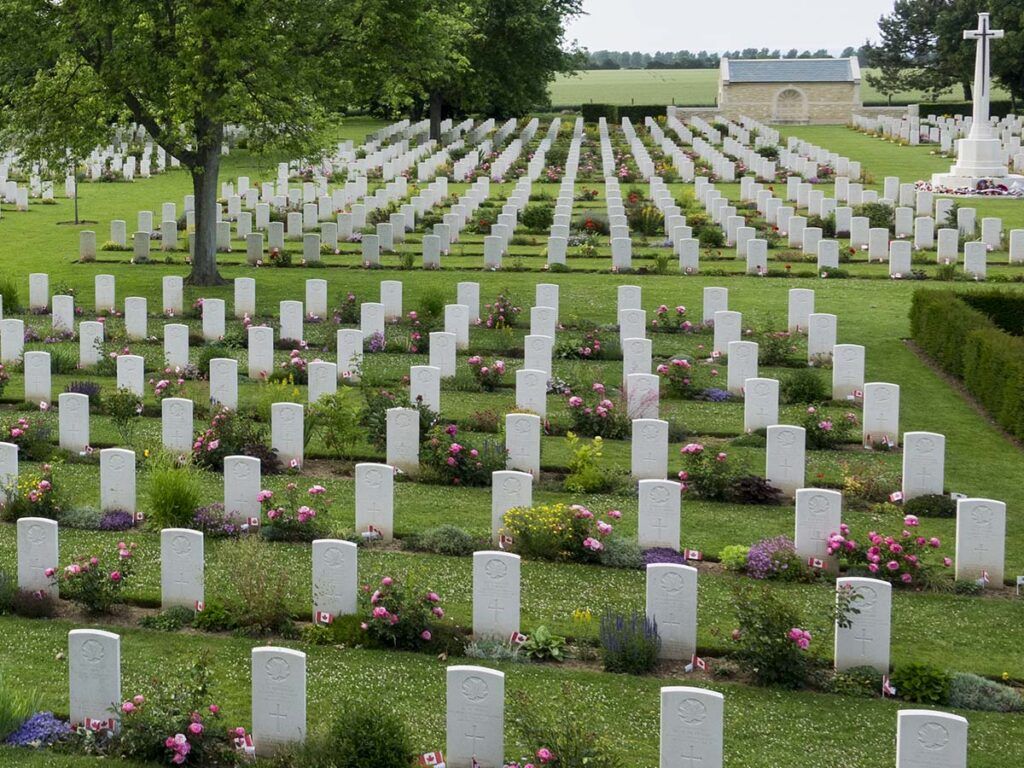
The design centers on a memorial and the Cross of Sacrifice. Headstones show maple leaves, regimental badges, and personal messages chosen by families.
This cemetery feels quieter and more personal than the American one. You’ll spot clusters of graves from the same days in June 1944. The visitor book is full of heartfelt notes from Canadians coming to pay respects.
Memorials in Caen and Bayeux
The Caen Memorial Museum covers WWII in depth, with exhibits on D-Day and the Battle of Normandy. You’ll want at least a few hours to take it all in, including the gardens dedicated to peace.
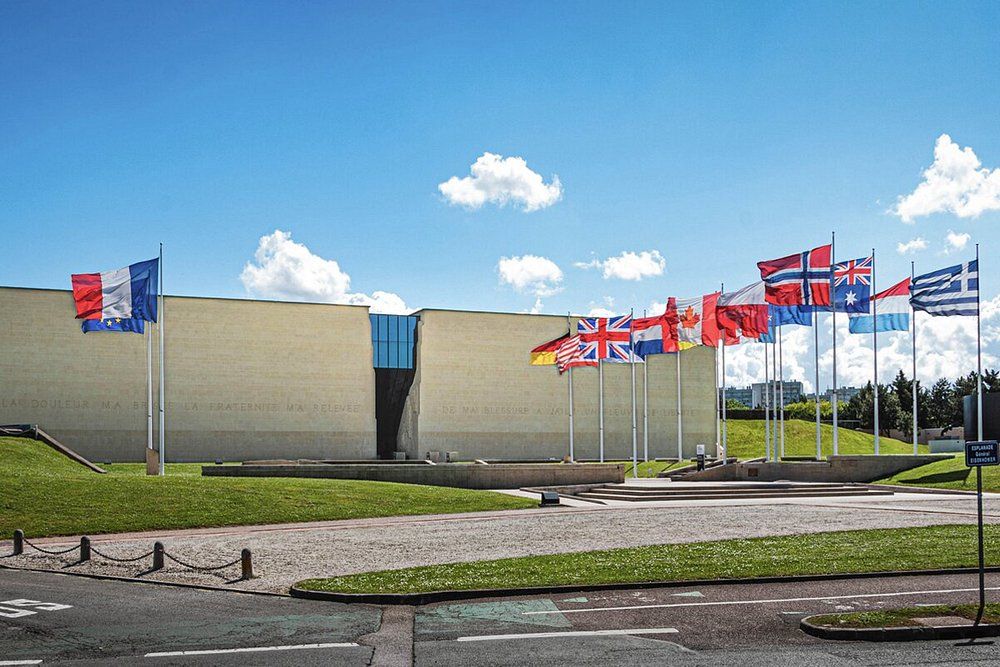
In Bayeux, the Memorial Museum of the Battle of Normandy sits close to the British Military Cemetery. Inside, you’ll find vehicles, weapons, and uniforms from the campaign.
Bayeux itself was the first major town freed after D-Day. The Bayeux Tapestry Museum—yes, it’s medieval, but it adds a layer to the region’s military story.
Guided Tours and Visiting Experiences
Exploring Ranville’s historical sites gets a lot more interesting with expert guides. There are plenty of tour options to help you get a grip on the area’s role in D-Day and the Battle of Normandy.
Find the perfect base for exploring Utah Beach, Pointe du Hoc, and beyond.
Guided Walking Tours in Ranville
Local historians lead walking tours through Ranville, the first French village freed on D-Day. Tours usually last 1-2 hours and cost €15-25 per person. Groups stay small (often 8-12 people) so you can hear the guide and chime in with questions.
Tours kick off at the Pegasus Memorial Museum and cover:
- Ranville War Cemetery (final resting place for 2,235 Commonwealth soldiers)
- St. Ranulf Church (once a field hospital)
- Original village buildings that survived the fighting
Walking tours run daily from April to October, but there are fewer in winter. It’s smart to book ahead, especially in June when anniversary events draw crowds.
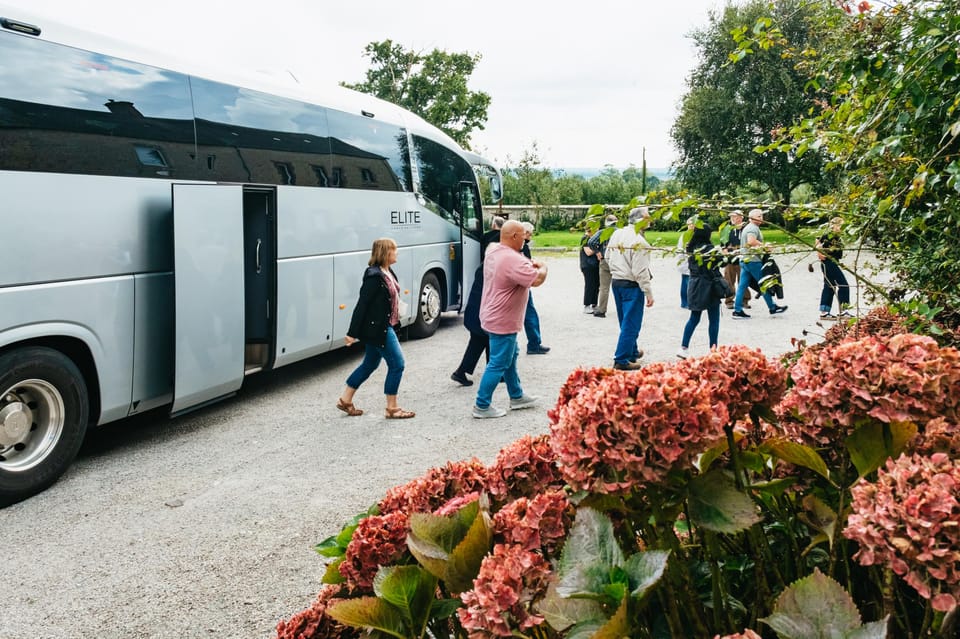
D-Day Bus Tours
Bus tours cover several Normandy landing beaches, including Sword Beach nearby. Most leave from Caen or Bayeux, though some pick up in Ranville.
Expect:
- Air-conditioned, comfy buses
- Guides who speak solid English
- Entry to main museums and memorials
- 6-8 hours for the full tour
Half-day tours zeroing in on British airborne operations are available through “Normandy Squared.” They take 1-8 people and cost €65-95 per person, depending on what’s included.
Families can find kid-friendly tours with stories and hands-on activities for kids 8 and up.
Recommended D-Day Tours:
- American D-Day Sites in Normandy Full-Day Tour
- American D-Day Sites in Normandy Half-Day Tour
- Half-Day Normandy WWII Sidecar Tour
- Full-Day US Battlefields of Normandy Tour
Custom Themed Tours with Local Experts
Private tours with local experts let you dive deep into specific Battle of Normandy themes. You can focus on:
- Airborne operations and Pegasus Bridge
- Roles of particular military units in Ranville’s liberation
- Civilian life during the occupation and liberation
- Photography tours of historic sites
Guides might be retired military or locals whose families lived through the war. Their stories and perspectives bring history to life.
Private tours usually start at €200 for a half day. Most guides will tailor the route to your interests or needs.
Recommended Private D-Day Tours:
- From Paris: Normandy D-Day Landing Beaches Full-Day Tour
- From Rouen: Normandy D-Day Beaches Private Full-Day Tour
- Private Tour: Rouen, Bayeux, and Falaise Day Trip from Bayeux
- Normandy WWII Private Half-day Sidecar Tour From Bayeux
Planning Your Visit: Practical Information
Visiting Ranville goes smoother with a bit of planning. This D-Day site serves up real WWII history without the massive crowds you’ll find elsewhere in Normandy.
Find comfortable stays within moments of historic battlegrounds
Getting to Ranville from Paris
Ranville sits about 240 km (150 miles) northwest of Paris. The easiest way is to catch a train from Paris to Caen (about 2 hours), then take a 15-minute taxi or rental car to Ranville.
If you’re driving, take the A13 motorway toward Caen and follow the signs to Ranville. It’ll take around 2.5-3 hours, traffic depending.
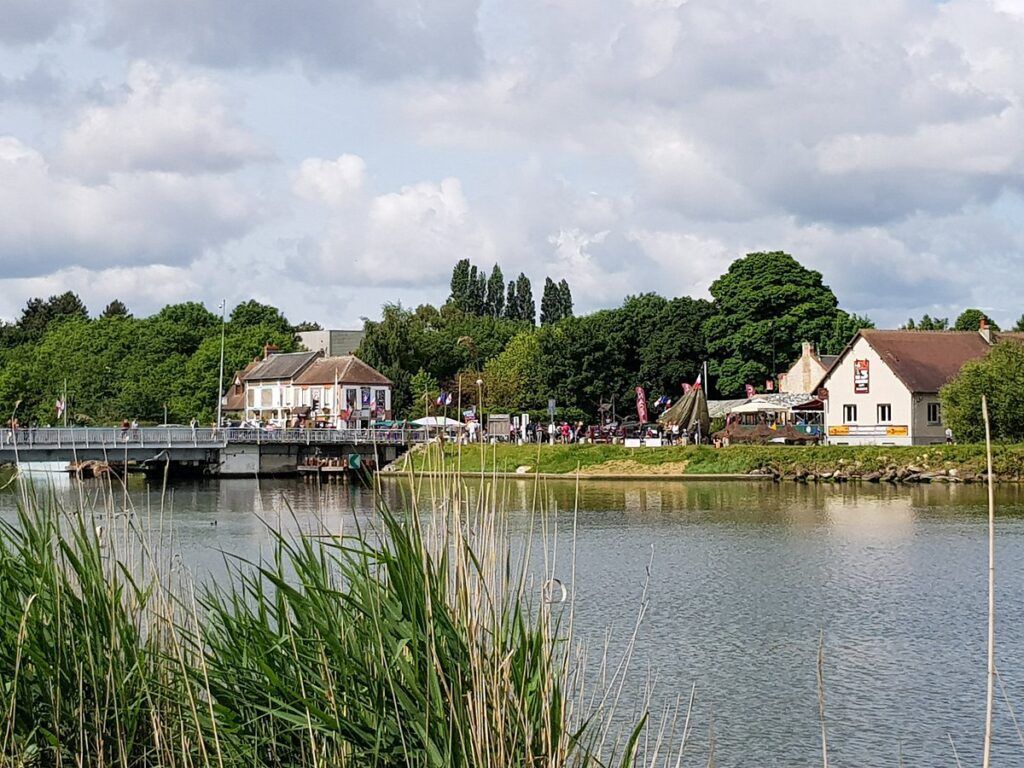
Some tour companies run day trips from Paris to the D-Day beaches, including Ranville. These handle transport and provide historical background, but you lose some flexibility compared to going solo.
Public buses run from Caen to villages near Ranville, though service is pretty limited. Definitely check schedules if you’re relying on public transport.
See all available accommodations near Ranville.
Best Times to Visit
May through September is ideal for Ranville and the Normandy coast—weather’s best then. June stands out because of D-Day anniversary events, especially around June 6th.
July and August bring the biggest crowds and warmest temps (18-22°C, or 65-72°F).
Spring (April-May) and fall (September-October) are quieter and a bit cooler, giving you more breathing room at the sites.
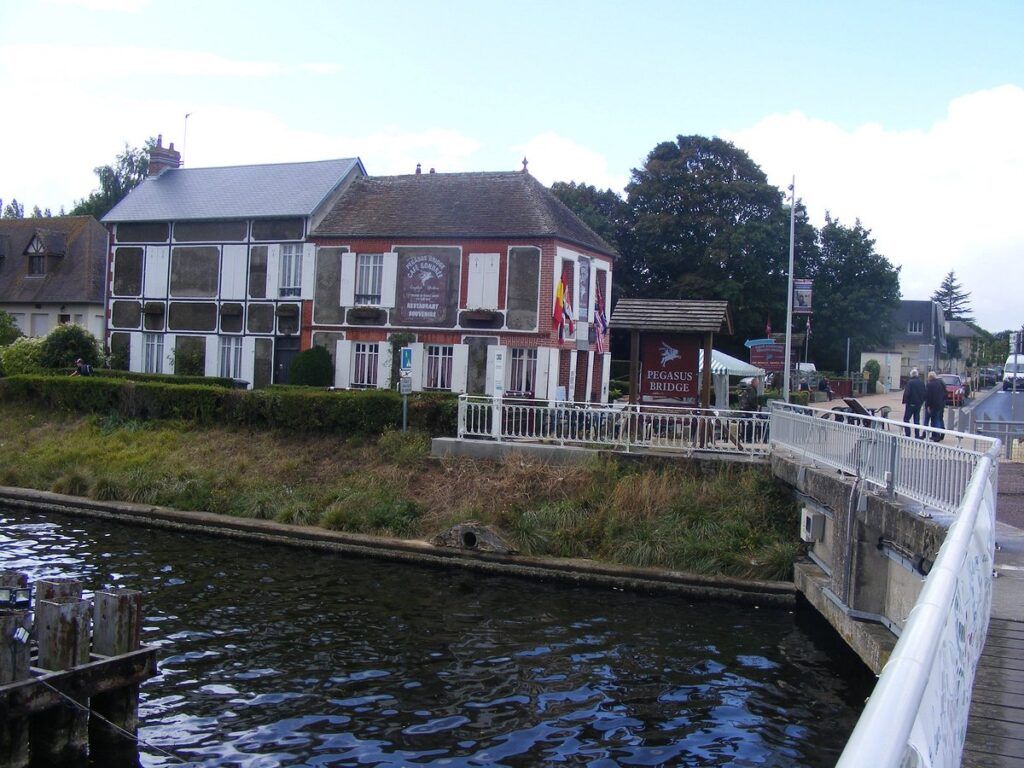
Winter (November-March) means hardly any tourists, but some attractions cut hours or close. Many small restaurants shut for the season too.
If you can, try for a weekday visit to dodge the weekend rush, especially at Pegasus Bridge Museum and the cemetery.
See all available accommodations near Ranville.
Accommodation and Dining
Accommodation Options:
- Ranville itself doesn’t have many places to stay
- Nearby Caen (15 minutes by car) has hotels for every budget
- B&Bs and guesthouses in surrounding villages make for a cozy alternative
- Book ahead for summer and D-Day anniversaries—places fill up fast
See all available accommodations near Ranville.
Dining in Ranville:
- La Renaissance café near Pegasus Bridge serves classic Norman dishes
- The local bakery has quick lunches and picnic fixings
- A few family-run spots specialize in seafood and regional fare
For longer stays, renting a countryside gîte (holiday home) gives you more room and a kitchen—great for families or groups checking out several D-Day sites.
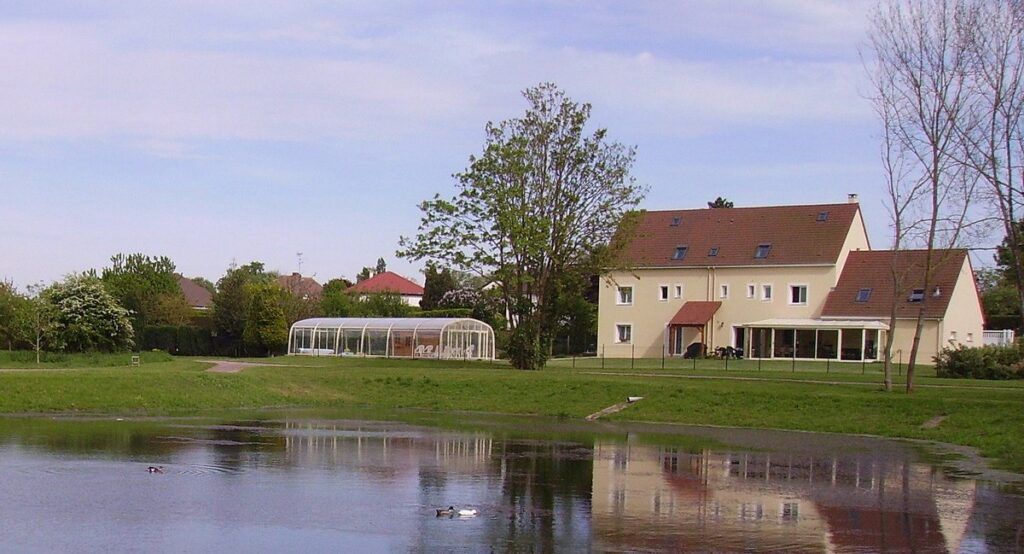
Travel Tips and Resources
Wear comfy walking shoes—lots of sites have uneven ground. Normandy weather changes fast, so pack layers and rain gear no matter when you go.
Essential Resources:
- Ranville War Cemetery: open daily, 8am-6pm (free entry)
- Pegasus Bridge Museum: 10am-5pm (Nov-Mar), 9:30am-6:30pm (Apr-Oct)
- Memorial de Caen museum gives in-depth WWII context
The small tourist office in Ranville hands out maps and brochures, but their website isn’t great for English info. The Normandy Tourism site (normandie-tourisme.fr) is much better in English.
Offline maps help since cell coverage can drop in rural spots. Most places take cards, but it’s smart to carry some cash for little shops or cafés.
See all available accommodations near Ranville.
From beachfront hotels to authentic French countryside stays. No booking fees.

